Authentication in the Internet of Medical Things: Taxonomy, Review, and Open Issues
Abstract
:1. Introduction
1.1. Motivation
1.2. Contributions
- This paper presents a systematic review of 118 recent articles related to authentication schemes in IoMT and published between 2016 and 2021.
- We establish a novel IoMT authentication taxonomy based on the most recent methods.
- Our study highlights major findings of the literature review analysis. The findings include significant insights about the implementation and evaluation of authentication schemes in the IoMT context.
- We conclude our study by discussing open issues and future research directions for significant improvements in IoMT authentication.
1.3. Scope
| Ref. | Year | Objective | IoMT Context | Taxonomy | Review | Open Issues | Attacks | Evaluation Techniques | Security Analysis Techniques |
|---|---|---|---|---|---|---|---|---|---|
| Saadeh et al. [12] | 2016 | A survey of authentication for IoT | × | × | √ | × | √ | √ | × |
| Thierre et al. [13] | 2017 | A review of authentication used in IoT | × | × | √ | √ | × | × | × |
| Ferrag et al. [10] | 2017 | A review of authentication protocols in IoT | × | √ | √ | √ | √ | √ | √ |
| Gamundani et al. [8] | 2018 | A review of attacks and threats of IoT authentication | × | × | √ | × | √ | × | × |
| El-Hajj et al. [9] | 2018 | Authentication taxonomy for IoT | × | √ | √ | × | × | × | × |
| Trnka et al. [5] | 2018 | A survey of IoT authentication, authorization | × | × | √ | × | × | × | × |
| Albalawi et al. [6] | 2019 | A survey of authentication for IoT | × | × | √ | × | √ | × | × |
| Kavianpour et al. [11] | 2019 | A systematic review of IoT authentication | × | × | √ | √ | √ | √ | × |
| El-Hajj et al. [14] | 2019 | IoT authentication taxonomy and survey | × | √ | √ | × | √ | × | × |
| Mehta et al. [15] | 2020 | A review and current issues in IoT authentication | × | × | √ | √ | √ | × | × |
| Agrawal et al. [7] | 2020 | A survey of authentication schemes in IoT | × | × | √ | × | × | × | × |
| Shu et al. [16] | 2021 | A review of ECC and authentication in IoT | × | × | √ | √ | × | × | × |
| Mamdouh et al. [1] | 2021 | A comprehensive survey of authentication mechanisms in IoMT | √ | × | √ | √ | √ | √ | √ |
| Current study | – | A taxonomy, review, and open issues of authentication in IoMT | √ | √ | √ | √ | √ | √ | √ |
1.4. Organization
2. Background
2.1. Smart Healthcare
2.2. IoT in Smart Healthcare
2.3. IoMT Context
2.3.1. IoMT Architecture
- The data collection layer performs the data sensing and collecting activities. It acquires patients’ medical parameters from sensors, actuators, edge servers, hand-held devices, and medical sensors via the data sensing acquisition protocols.
- The network layer transfers the collected medical data from the data collection layer through a wired or wireless network to deliver the data to the third layer (i.e., the data management layer). This layer connects all medical things in the network, and exchanges data.
- The data management layer uses the middle-ware applications and services needed by IoMT applications and users such that the interoperability between the heterogeneous entities being used is ensured in this layer. Other essential services, such as storing, processing, and interpreting the collected medical data, are provided in this layer.
- The application layer supports intelligent interaction between a user and the IoMT system. Here, the user can easily interconnect and manage medical things and display the medical data.
2.3.2. IoMT Applications
- Monitoring applications use pervasive computing to remotely monitor a patient’s health for prevention purposes [20]. Examples of widespread applications under this category include monitoring oxygen levels, blood pressure, asthma, electrocardiogram (ECG), glucose, etc.
- Diagnostic applications mainly use the semantics explained in electronic healthcare records to diagnose diseases. The effectiveness of these applications is highly dependent upon the quality of data collected through the IoMT devices and the predefined observations in the electronic healthcare records.
- Therapeutic applications involve remote interventions, which lead to many challenges according to the level of intervention. Remote surgery is an example of such applications. Therapeutic IoMT applications are not currently popular because they need advanced technologies and experts from different fields to implement them.
- Rehabilitation applications are mainly used to identify the patients’ problems and help them to regain the functions needed in everyday life. An example of rehabilitation applications is the stroke rehabilitation system.
2.3.3. IoMT Devices
- Implantable devices are fitted inside patients’ bodies, usually to help doctors in diagnostic and surgical tasks. Examples of these devices are a capsule containing a camera but which is small enough to be swallowed, and an embedded cardiac sensor.
- Wearable devices are developed by embedding different sensors in wearable accessories. Examples of these devices are necklaces, wristbands, shoes, and watches.
- Bearable devices are equipped with patients’ computers for specific purposes. These commonly help people to obtain different services in everyday life. An air quality monitor is an example of a bearable device connected to an asthma patient’s smart-phone or tablet.
- Nearable devices are anchored on doors, tables, or even beds. The patients do not need to carry these devices. The interaction with these devices is natural, such as with door, motion, pressure, or temperature sensors. They are expected to alert patients, their relatives, or healthcare providers when abnormal signs are gathered. Such devices are aware of the patient’s context to help them monitor their activities, such as their quality of sleep and number of bathroom visits.
2.4. IoMT Security Requirements
2.4.1. Information Level Security Requirements
- Confidentiality: ensures that only legitimate people can access the information. In other words, information has to be stored and represented so that unauthorized users cannot access it. Since the IoMT systems operate in a distributed and remote way, the need for ensuring data confidentiality is more critical.
- Integrity: ensures that the information is precise and consistent during collection, storage, and sharing. In IoMT applications, any possibility of sharing imprecise or corrupted information may lead to a patient’s death.
- Privacy: it is a vital requirement in IoMT application, and it requires special attention. Private information is only accessed and used by legitimate users, and for the purpose for which it is collected. In IoMT systems, privacy standards should be maintained during all phases of information management.
2.4.2. Functional Level Security Requirements
- Availability ensures that a service is available to intended users anytime and anywhere. In IoMT systems, the availability requirement is extended to ensure the availability of IoMT entities themselves.
- Non-repudiation: it ensures the ability to determine how and by whom an event or a task occurred. In this way, an entity cannot deny the authenticity or refute its responsibility.
2.4.3. Access Level Security Requirements
- Authentication: it verifies the identity of an entity to permit its access to the IoMT system. Therefore, the authentication mechanism is the first gate for an entity to access and communicate with other entities.
- Authorization is responsible for determining the privileges for authenticated entities to access or use the system’s services or resources.
3. Research Methodology
3.1. Research Questions
3.2. Rules of Selection
- The research time frame for the selected articles is between 2015 to 2021. The time frame ensures a recent evolution of authentication in IoMT.
- The search string is Authentication, IoMT, IoT-based healthcare, IoMT devices, Access control, Key agreement. Many articles were found using the specified search string, since the search string is not always present in the titles or abstracts, we searched the bodies of the digital sources to manually identify those articles.
- Inclusion and exclusion criteria are presented in Table 3.
3.3. Article Search
3.4. Article Selection
3.5. Article Review
3.6. Taxonomy
4. IoMT Authentication Taxonomy
4.1. Authentication Levels
4.2. Authentication Architectures
4.3. Authentication Credentials
4.4. Authentication Procedures
4.5. Authentication Categories
4.6. Authentication Schemes
4.6.1. Basic Authentication
4.6.2. Authentication and Key Agreement
4.6.3. Certificate-Based Authentication
4.6.4. Cryptography-Based Authentication
4.7. Authentication Attacks
5. Review Findings
6. Open Issues and Future Directions
- Cross-domain authentication: It implies that the authentication scheme can authenticate entities from their trusted domain. Cross-domain authentication has become an urgent need since integrating multiple healthcare applications has become popular.
- Cross-layer authentication: The concept of cross-layer authentication must be supported for improving the security of the authentication process within IoMT networks. Cross-layer authentication ensures that all entities involved in communication at different layers are authenticated to each other. This issue requires a comprehensive authentication scheme to support layered IoMT architecture.
- Scalability: Since IoMT is the building block of today’s smart healthcare applications, it has become massive and highly distributed. Authentication solutions need to cope with such improvements by supporting the scalable schemes. A scalable scheme refers to adding IoMT entities as required without sacrificing the system’s performance. Many researchers attempted to handle scalability issues through a decentralized authentication scheme. However, those schemes require high governance and privacy standards, especially for healthcare applications.
- Adjustability: It is the ability of an authentication scheme to be adjusted in response to changes in the IoMT network. It is a challenging task for a static authentication scheme. Therefore, a continuously developing authentication scheme will gain more research attention in the next few years. Furthermore, context-aware authentication schemes need a research focus to improve the response to the changing performance of IoMT networks.
- Anonymity: This issue relates to the cryptographic-based scheme where entities are authenticated anonymously. This scenario implies full-anonymity where it is easy for an exploited entity to access the system’s resources without discovering its identification. For the majority of IoMT use cases, partial anonymity supported by some authentication schemes is adequate for keeping privacy acceptable.
- The number of exchanged messages: The authentication scheme performance is affected by the number of messages required to achieve the authentication task. Consequently, it is necessary to reduce the number of exchanged messages to support real-time authentication for entities within time-sensitive healthcare applications such as remote monitoring healthcare services. This issue seems easy to accomplish, but the trade-off here is to reduce the number of messages and keep a high level of security.
- Re-authentication: It is more efficient to authenticate IoMT entities only once to reduce communication overhead. However, this can affect the security level of the overall system. Many research efforts intended to balance the communication overhead and the re-authentication need by delegating the re-authentication process to the edge entities instead of relying on a centralized authentication server.
- User-friendly authentication: This issue is subject to quality assurance in smart healthcare applications where their stakeholders are not interested in the latest technological techniques for security. The authentication scheme for such an application requires considering a straightforward process, and keeping the same level of security for the IoMT systems.
7. Conclusions
Author Contributions
Funding
Institutional Review Board Statement
Informed Consent Statement
Data Availability Statement
Acknowledgments
Conflicts of Interest
References
- Mamdouh, M.; Awad, A.I.; Khalaf, A.A.; Hamed, H.F. Authentication and Identity Management of IoHT Devices: Achievements, Challenges, and Future Directions. Comput. Secur. 2021, 111, 102491. [Google Scholar] [CrossRef]
- Alsubaei, F.; Abuhussein, A.; Shandilya, V.; Shiva, S. IoMT-SAF: Internet of Medical Things Security Assessment Framework. Internet Things 2019, 8, 100123. [Google Scholar] [CrossRef]
- Hatzivasilis, G.; Soultatos, O.; Ioannidis, S.; Verikoukis, C.; Demetriou, G.; Tsatsoulis, C. Review of Security and Privacy for the Internet of Medical Things (IoMT). In Proceedings of the 2019 15th International Conference on Distributed Computing in Sensor Systems (DCOSS), Santorini Island, Greece, 29–31 May 2019; pp. 457–464. [Google Scholar] [CrossRef]
- Liyanage, M.; Braeken, A.; Kumar, P.; Ylianttila, M. IoT Security: Advances in Authentication; John Wiley and Sons: Hoboken, NJ, USA, 2020. [Google Scholar]
- Trnka, M.; Cerny, T.; Stickney, N. Survey of Authentication and Authorization for the Internet of Things. Secur. Commun. Netw. 2018, 2018, 4351603. [Google Scholar] [CrossRef] [Green Version]
- Albalawi, A.; Almrshed, A.; Badhib, A.; Alshehri, S. A Survey on Authentication Techniques for the Internet of Things. In Proceedings of the 2019 International Conference on Computer and Information Sciences (ICCIS), Sakaka, Saudi Arabia, 3–4 April 2019; pp. 1–5. [Google Scholar] [CrossRef]
- Science, C. A Survey on the Authentication Techniques in Internet of Things. In Proceedings of the 2020 IEEE International Students’ Conference on Electrical, Electronics and Computer Science (SCEECS), Bhopal, India, 22–23 February 2020. [Google Scholar]
- Gamundani, A.M.; Phillips, A.; Muyingi, H.N. An Overview of Potential Authentication Threats and Attacks on Internet of Things(IoT): A Focus on Smart Home Applications. In Proceedings of the IEEE International Conference on Internet of Things (iThings) and IEEE Green Computing and Communications (GreenCom) and IEEE Cyber, Physical and Social Computing (CPSCom) and IEEE Smart Data (SmartData), Halifax, NS, Canada, 30 July–3 August 2018; pp. 50–57. [Google Scholar]
- El-Hajj, M.; Chamoun, M.; Fadlallah, A.; Serhrouchni, A. Taxonomy of authentication techniques in Internet of Things (IoT). In Proceedings of the IEEE 15th Student Conference on Research and Development (SCOReD), Wilayah Persekutuan Putrajaya, Malaysia, 13–14 December 2017; pp. 67–71. [Google Scholar] [CrossRef]
- Ferrag, M.A.; Maglaras, L.A.; Janicke, H.; Jiang, J.; Shu, L. Authentication Protocols for Internet of Things: A Comprehensive Survey. Secur. Commun. Netw. 2017, 2017, 6562953. [Google Scholar] [CrossRef]
- Kavianpour, S.; Shanmugam, B.; Azam, S.; Zamani, M.; Narayana Samy, G.; De Boer, F. A systematic literature review of authentication in Internet of Things for heterogeneous devices. J. Comput. Netw. Commun. 2019, 2019, 5747136. [Google Scholar] [CrossRef] [Green Version]
- Saadeh, M.; Sleit, A.; Qatawneh, M.; Almobaideen, W. August. Authentication techniques for the internet of things: A survey. In Proceedings of the cybersecurity and cyberforensics conference (CCC), Amman, Jordan, 2–4 August 2016. [Google Scholar] [CrossRef]
- Thierre, W.; De Lima, S.; Ferraz, F.S. Authentication and the Internet of Things. In Proceedings of the The Twelfth International Conference on Software Engineering Advances (ICSEA), Athens, Greece, 8–12 October 2017; pp. 34–40. [Google Scholar]
- El-Hajj, M.; Fadlallah, A.; Chamoun, M.; Serhrouchni, A. A Survey of Internet of Things (IoT) Authentication Schemes. Sensors 2019, 19, 1141. [Google Scholar] [CrossRef] [PubMed] [Green Version]
- Mehta, M.; Patel, K. A review for IOT authentication–current research trends and open challenges. Mater. Today Proc. 2020; in press. [Google Scholar]
- Shu, N.; Phwhu, V.; Ri, D. A Review on Authentication Protocol and ECC in IOT. In Proceedings of the 2021 International Conference on Advance Computing and Innovative Technologies in Engineering (ICACITE), Greater Noida, India, 4–5 March 2021. [Google Scholar]
- Sundaravadivel, P.; Kougianos, E.; Mohanty, S.P.; Ganapathiraju, M.K. Everything You Wanted to Know about Smart Health Care: Evaluating the Different Technologies and Components of the Internet of Things for Better Health. IEEE Consum. Electron. Mag. 2017, 7, 18–28. [Google Scholar] [CrossRef]
- Koutras, D.; Stergiopoulos, G.; Dasaklis, T.; Kotzanikolaou, P.; Glynos, D.; Douligeris, C. Security in IoMT Communications: A Survey. Sensors 2020, 20, 4828. [Google Scholar] [CrossRef]
- Hemanth, J.A.D.J.; George, A. Internet of Medical Things: Remote Healthcare Systems and Applications; Springer: Berlin/Heidelberg, Germany, 2021. [Google Scholar]
- Alsaeed, N.I.; Aldahwan, N.S. Ubiquitous Health Care Monitoring Services (UHCMS): Review of Opportunities and Challenges. Int. J. Comput. Appl. 2020, 975, 8887. [Google Scholar] [CrossRef]
- Kumar, T.; Braeken, A.; Jurcut, A.D.; Liyanage, M.; Ylianttila, M. AGE: Authentication in gadget-free healthcare environments. Inf. Technol. Manag. 2019, 21, 95–114. [Google Scholar] [CrossRef] [Green Version]
- Pradhan, B.; Bhattacharyya, S.; Pal, K. IoT-Based Applications in Healthcare Devices. J. Health Eng. 2021, 2021, 6632599. [Google Scholar] [CrossRef] [PubMed]
- Alsubaei, F.; Abuhussein, A.; Shiva, S. Security and privacy in the internet of medical things: Taxonomy and risk assessment. In Proceedings of the 2017 IEEE 42nd Conference on Local Computer Networks Workshops (LCN Workshops), Singapore, 9 October 2017; pp. 112–120. [Google Scholar]
- Arfaoui, A.; Kribeche, A.; Senouci, S.-M. Context-aware anonymous authentication protocols in the internet of things dedicated to e-health applications. Comput. Netw. 2019, 159, 23–36. [Google Scholar] [CrossRef]
- Aghili, S.F.; Mala, H.; Kaliyar, P.; Conti, M. SecLAP: Secure and lightweight RFID authentication protocol for Medical IoT. Futur. Gener. Comput. Syst. 2019, 101, 621–634. [Google Scholar] [CrossRef]
- Chatterjee, U.; Sadhukhan, D.; Ray, S. An Improved Authentication and Key Agreement Protocol for Smart Healthcare System in the Context of Internet of Things Using Elliptic Curve Cryptography; Springer: Singapore, 2020. [Google Scholar] [CrossRef]
- Alzahrani, B.A.; Irshad, A.; Albeshri, A.; Alsubhi, K. A Provably Secure and Lightweight Patient-Healthcare Authentication Protocol in Wireless Body Area Networks. Wirel. Pers. Commun. 2020, 117, 47–69. [Google Scholar] [CrossRef]
- Khemissa, H.; Tandjaoui, D. A Lightweight Authentication Scheme for E-Health Applications in the Context of Internet of Things. In Proceedings of the 2015 9th International Conference on Next Generation Mobile Applications, Services and Technologies, Cambridge, UK, 9–11 September 2015; pp. 90–95. [Google Scholar]
- Palve, A.; Patel, H. Towards securing real time data in IoMT environment. In Proceedings of the 2018 8th International Conference on Communication Systems and Network Technologies (CSNT), Bhopal, India, 24–26 November 2018; pp. 113–119. [Google Scholar]
- Iqbal, M.A.; Bayoumi, M. Secure End-to-End key establishment protocol for resource-constrained healthcare sensors in the context of IoT. In Proceedings of the 2016 International Conference on High Performance Computing &Simulation (HPCS), Innsbruck, Austria, 18–22 July 2016; pp. 523–530. [Google Scholar]
- Park, K.; Noh, S.; Lee, H.; Das, A.K.; Kim, M.; Park, Y.; Wazid, M. LAKS-NVT: Provably Secure and Lightweight Authentication and Key Agreement Scheme Without Verification Table in Medical Internet of Things. IEEE Access 2020, 8, 119387–119404. [Google Scholar] [CrossRef]
- Xu, G.; Wang, F.; Zhang, M.; Peng, J. Efficient and Provably Secure Anonymous User Authentication Scheme for Patient Monitoring Using Wireless Medical Sensor Networks. IEEE Access 2020, 8, 47282–47294. [Google Scholar] [CrossRef]
- Zhang, Y.; Gravina, R.; Lu, H.; Villari, M.; Fortino, G. PEA: Parallel electrocardiogram-based authentication for smart healthcare systems. J. Netw. Comput. Appl. 2018, 117, 10–16. [Google Scholar] [CrossRef]
- Minahil; Ayub, M.F.; Mahmood, K.; Kumari, S.; Sangaiah, A.K. Lightweight authentication protocol for e-health clouds in IoT-based applications through 5G technology. Digit. Commun. Netw. 2020, 7, 235–244. [Google Scholar] [CrossRef]
- Srinivas, J.; Mishra, D.; Mukhopadhyay, S. A Mutual Authentication Framework for Wireless Medical Sensor Networks. J. Med. Syst. 2017, 41, 80. [Google Scholar] [CrossRef]
- Aghili, S.F.; Mala, H.; Shojafar, M.; Peris-Lopez, P. LACO: Lightweight three-factor authentication, access control and ownership transfer scheme for e-health systems in IoT. Future Gener. Comput. Syst. 2019, 96, 410–424. [Google Scholar] [CrossRef]
- Park, Y.; Park, Y. A Selective Group Authentication Scheme for IoT-Based Medical Information System. J. Med. Syst. 2017, 41, 48. [Google Scholar] [CrossRef] [PubMed]
- Sahoo, S.S.; Mohanty, S.; Majhi, B. A secure three factor based authentication scheme for health care systems using IoT enabled devices. J. Ambient Intell. Humaniz. Comput. 2020, 12, 1419–1434. [Google Scholar] [CrossRef]
- Khalid, H.; Hashim, S.; Ahmad, S.S.; Hashim, F.; Chaudhary, M. Cross-SN: A Lightweight Authentication Scheme for a Multi-Server Platform Using IoT-Based Wireless Medical Sensor Network. Electronics 2021, 10, 790. [Google Scholar] [CrossRef]
- Dwivedi, A.D.; Srivastava, G.; Dhar, S.; Singh, R. A Decentralized Privacy-Preserving Healthcare Blockchain for IoT. Sensors 2019, 19, 326. [Google Scholar] [CrossRef] [PubMed] [Green Version]
- Chaudhary, R.R.K.; Singh, A.; Chatterjee, K. An Enhanced Authentication Scheme for Internet of Things Based E-Healthcare System. J. Comput. Theor. Nanosci. 2020, 17, 246–253. [Google Scholar] [CrossRef]
- Fotouhi, M.; Bayat, M.; Das, A.K.; Far, H.A.N.; Pournaghi, S.M.; Doostari, M.A. A lightweight and secure two-factor authentication scheme for wireless body area networks in health-care IoT. Comput. Netw. 2020, 177, 107333. [Google Scholar] [CrossRef]
- Kumar, R.; Tripathi, R. Towards design and implementation of security and privacy framework for Internet of Medical Things (IoMT) by leveraging blockchain and IPFS technology. J. Supercomput. 2021, 77, 7916–7955. [Google Scholar] [CrossRef]
- Kang, J.; Fan, K.; Zhang, K.; Cheng, X.; Li, H.; Yang, Y. An ultra light weight and secure RFID batch authentication scheme for IoMT. Comput. Commun. 2020, 167, 48–54. [Google Scholar] [CrossRef]
- He, D.; Zeadally, S. An Analysis of RFID Authentication Schemes for Internet of Things in Healthcare Environment Using Elliptic Curve Cryptography. IEEE Internet Things J. 2014, 2, 72–83. [Google Scholar] [CrossRef]
- Kumar, N.; Kaur, K.; Misra, S.C.; Iqbal, R. An intelligent RFID-enabled authentication scheme for healthcare applications in vehicular mobile cloud. Peer-to-Peer Netw. Appl. 2015, 9, 824–840. [Google Scholar] [CrossRef]
- Satamraju, K.P. Proof of Concept of Scalable Integration of Internet of Things and Blockchain in Healthcare. Sensors 2020, 20, 1389. [Google Scholar] [CrossRef] [PubMed] [Green Version]
- Moosavi, S.R.; Nigussie, E.; Levorato, M.; Virtanen, S.; Isoaho, J. Performance Analysis of End-to-End Security Schemes in Healthcare IoT. Procedia Comput. Sci. 2018, 130, 432–439. [Google Scholar] [CrossRef]
- Yanambaka, V.P.; Mohanty, S.P.; Kougianos, E.D. Puthal, PMsec: Physical Unclonable Function-Based Robust and Lightweight Authentication in the Internet of Medical Things. IEEE Trans. Consum. Electron. 2019, 65, 388–397. [Google Scholar] [CrossRef]
- Li, X.; Niu, J.; Karuppiah, M.; Kumari, S.; Wu, F. Secure and Efficient Two-Factor User Authentication Scheme with User Anonymity for Network Based E-Health Care Applications. J. Med. Syst. 2016, 40, 1–12. [Google Scholar] [CrossRef] [PubMed]
- Srinivas, J.; Das, A.K.; Kumar, N.; Rodrigues, J.J. Cloud centric authentication for wearable healthcare monitoring system. IEEE Trans. Dependable Secur. Comput. 2018, 17, 942–956. [Google Scholar] [CrossRef]
- Lee, T.F.; Chen, W.Y. Lightweight fog computing-based authentication protocols using physically unclonable functions for internet of medical things. J. Inf. Secur. Appl. 2021, 59, 102817. [Google Scholar] [CrossRef]
- Renuka, K.; Kumari, S.; Li, X. Design of a Secure Three-Factor Authentication Scheme for Smart Healthcare. J. Med. Syst. 2019, 43, 133. [Google Scholar] [CrossRef]
- Soni, P.; Pal, A.K.; Islam, S.H. An improved three-factor authentication scheme for patient monitoring using WSN in remote health-care system. Comput. Methods Programs Biomed. 2019, 182, 105054. [Google Scholar] [CrossRef]
- Moosavi, S.R.; Gia, T.N.; Rahmani, A.-M.; Nigussie, E.; Virtanen, S.; Isoaho, J.; Tenhunen, H. SEA: A Secure and Efficient Authentication and Authorization Architecture for IoT-Based Healthcare Using Smart Gateways. Procedia Comput. Sci. 2015, 52, 452–459. [Google Scholar] [CrossRef]
- Alzubi, J.A. Blockchain-based Lamport Merkle digital signature: Authentication tool in IoT healthcare. Comput. Commun. 2021, 170, 200–208. [Google Scholar] [CrossRef]
- Tahir, M.; Sardaraz, M.; Muhammad, S.; Khan, M.S. A Lightweight Authentication and Authorization Framework for Blockchain-Enabled IoT Network in Health-Informatics. Sustainability 2020, 12, 6960. [Google Scholar] [CrossRef]
- Nguyen, D.C.; Pathirana, P.N.; Ding, M.; Seneviratne, A. BEdgeHealth: A Decentralized Architecture for Edge-Based IoMT Networks Using Blockchain. IEEE Internet Things J. 2021, 8, 11743–11757. [Google Scholar] [CrossRef]
- Garg, N.; Wazid, M.; Das, A.K.; Singh, D.P.; Rodrigues, J.J.P.C.; Park, Y. BAKMP-IoMT: Design of Blockchain Enabled Authenticated Key Management Protocol for Internet of Medical Things Deployment. IEEE Access 2020, 8, 95956–95977. [Google Scholar] [CrossRef]
- Dasgupta, D.; Roy, A.; Nag, A. Advances in User Authentication; Springer: Berlin/Heidelberg, Germany, 2017. [Google Scholar]
- Ducray, B. Authentication by Gesture Recognition: A Dynamic Biometric Application Submitted by Royal Holloway; University of London: London, UK, 2017. [Google Scholar]
- Binu, S.; Misbahuddin, M.; Paulose, J. A Signature-Based Mutual Authentication Protocol for Remote Health Monitoring. SN Comput. Sci. 2019, 1, 8. [Google Scholar] [CrossRef] [Green Version]
- Mohit, P.; Amin, R.; Karati, A.; Biswas, G.P.; Khan, M.K. A standard mutual authentication protocol for cloud computing based health care system. J. Med. Syst. 2017, 41, 1–13. [Google Scholar] [CrossRef]
- Alzahrani, B.A.; Irshad, A. A secure and efficient TMIS-based authentication scheme improved against Zhang et al.’s scheme. Arab. J. Sci. Eng. 2018, 43, 8239–8253. [Google Scholar] [CrossRef]
- Hashim, M.M.; Rhaif, S.H.; Abdulrazzaq, A.A.; Ali, A.H.; Taha, M.S. Based on IoT Healthcare Application for Medical Data Authentication: Towards A New Secure Framework Using Steganography. IOP Conf. Ser. Mater. Sci. Eng. 2020, 881, 012120. [Google Scholar] [CrossRef]
- Xu, Z.; Xu, C.; Liang, W.; Xu, J.; Chen, H. A Lightweight Mutual Authentication and Key Agreement Scheme for Medical Internet of Things. IEEE Access 2019, 7, 53922–53931. [Google Scholar] [CrossRef]
- Guo, J.; Lu, S.; Gu, C.; Chen, X.; Wei, F. December. Security analysis and design of authentication key agreement protocol in medical internet of things. In Proceedings of the International Conference on Networking and Network Applications (NaNA), Haikou, China, 10–13 December 2020; pp. 233–240. [Google Scholar]
- Wu, F.; Li, X.; Sangaiah, A.K.; Xu, L.; Kumari, S.; Wu, L.; Shen, J. A lightweight and robust two-factor authentication scheme for personalized healthcare systems using wireless medical sensor networks. Futur. Gener. Comput. Syst. 2018, 82, 727–737. [Google Scholar] [CrossRef]
- Sureshkumar, V.; Aminb, R.; Vijaykumar, V.; Sekar, S.R. Robust secure communication protocol for smart healthcare system with FPGA implementation. Futur. Gener. Comput. Syst. 2019, 100, 938–951. [Google Scholar] [CrossRef]
- Ravanbakhsh, N.; Nazari, M. An efficient improvement remote user mutual authentication and session key agreement scheme for E-health care systems. Multimedia Tools Appl. 2016, 77, 55–88. [Google Scholar] [CrossRef]
- Das, A.K.; Sutrala, A.K.; Odelu, V.; Goswami, A. A Secure Smartcard-Based Anonymous User Authentication Scheme for Healthcare Applications Using Wireless Medical Sensor Networks. Wirel. Pers. Commun. 2016, 94, 1899–1933. [Google Scholar] [CrossRef]
- Karthigaiveni, M.; Indrani, B. An efficient two-factor authentication scheme with key agreement for IoT based E-health care application using smart card. J. Ambient Intell. Humaniz. Comput. 2019, 1–12. [Google Scholar] [CrossRef]
- Deebak, B.D.; Al-Turjman, F. Smart mutual authentication protocol for cloud based medical healthcare systems using internet of medical things. IEEE J. Sel. Areas Commun. 2020, 39, 346–360. [Google Scholar] [CrossRef]
- Ever, Y.K. Secure-anonymous user authentication scheme for e-healthcare application using wireless medical sensor networks. IEEE Syst. J. 2018, 13, 456–467. [Google Scholar] [CrossRef]
- Deebak, B.D.; Al-Turjman, F.; Aloqaily, M.; Alfandi, O. An Authentic-Based Privacy Preservation Protocol for Smart e-Healthcare Systems in IoT. IEEE Access 2019, 7, 135632–135649. [Google Scholar] [CrossRef]
- Mahendran, R.K.; Velusamy, P. A secure fuzzy extractor based biometric key authentication scheme for body sensor network in Internet of Medical Things. Comput. Commun. 2020, 153, 545–552. [Google Scholar] [CrossRef]
- Deebak, B.D.; Al-Turjman, F. Secure-user sign-in authentication for IoT-based eHealth systems. Complex Intell. Syst. 2021, 1–21. [Google Scholar] [CrossRef]
- Dhillon, P.K.; Kalra, S. Multi-factor user authentication scheme for IoT-based healthcare services. J. Reliab. Intell. Environ. 2018, 4, 141–160. [Google Scholar] [CrossRef]
- Ali, R.; Pal, A.K. Cryptanalysis and Biometric-Based Enhancement of a Remote User Authentication Scheme for E-Healthcare System. Arab. J. Sci. Eng. 2018, 43, 7837–7852. [Google Scholar] [CrossRef]
- Xu, J.; Wei, L.; Wu, W.; Wang, A.; Zhang, Y.; Zhou, F. Privacy-preserving data integrity verification by using lightweight streaming authenticated data structures for healthcare cyber–physical system. Futur. Gener. Comput. Syst. 2018, 108, 1287–1296. [Google Scholar] [CrossRef]
- Kumar, P.; Chouhan, L. A privacy and session key based authentication scheme for medical IoT networks. Comput. Commun. 2021, 166, 154–164. [Google Scholar] [CrossRef]
- Patwary, A.A.N.; Fu, A.; Battula, S.K.; Naha, R.K.; Garg, S.; Mahanti, A. FogAuthChain: A secure location-based authentication scheme in fog computing environments using Blockchain. Comput. Commun. 2020, 162, 212–224. [Google Scholar] [CrossRef]
- Chauhan, S. Aadhaar-Based Authentication and Authorization Scheme for Remote Healthcare Monitoring. In Innovations in Computational Intelligence and Computer Vision; Springer: Singapore, 2021; pp. 311–318. [Google Scholar]
- Almalki, F.A.; Soufiene, B.O. EPPDA: An efficient and privacy-preserving data aggregation scheme with authentication and authorization for IoT-based healthcare applications. Wirel. Commun. Mob. Comput. 2021, 2021, 5594159. [Google Scholar] [CrossRef]
- Parah, S.A.; Kaw, J.A.; Bellavista, P.; Loan, N.A.; Bhat, G.M.; Muhammad, K.; de Albuquerque, V.H.C. Efficient Security and Authentication for Edge-Based Internet of Medical Things. IEEE Internet Things J. 2020, 8, 15652–15662. [Google Scholar] [CrossRef] [PubMed]
- Adeli, M.; Bagheri, N.; Meimani, H.R. On the designing a secure biometric-based remote patient authentication scheme for mobile healthcare environments. J. Ambient Intell. Humaniz. Comput. 2020, 12, 3075–3089. [Google Scholar] [CrossRef]
- Liu, T.; Liu, X.; Li, X.; Amin, R.; Liang, W.; Hsieh, M.-Y. RETRACTED ARTICLE: Cloud enabled robust authenticated key agreement scheme for telecare medical information system. Connect. Sci. 2021, 33, I–XX. [Google Scholar] [CrossRef]
- Das, A.K. A secure and robust temporal credential-based three-factor user authentication scheme for wireless sensor networks. Peer-to-Peer Netw. Appl. 2014, 9, 223–244. [Google Scholar] [CrossRef]
- Liu, C.-H.; Chung, Y.-F. Secure user authentication scheme for wireless healthcare sensor networks. Comput. Electr. Eng. 2017, 59, 250–261. [Google Scholar] [CrossRef]
- Hajian, R.; ZakeriKia, S.; Erfani, S.H.; Mirabi, M. SHAPARAK: Scalable healthcare authentication protocol with attack-resilience and anonymous key-agreement. Comput. Netw. 2020, 183, 107567. [Google Scholar] [CrossRef]
- Kumar, P.M.; Gandhi, U.D. Enhanced DTLS with CoAP-based authentication scheme for the internet of things in healthcare application. J. Supercomput. 2017, 76, 3963–3983. [Google Scholar] [CrossRef]
- Li, J.; Su, Z.; Guo, D.; Choo, K.-K.R.; Ji, Y. PSL-MAAKA: Provably Secure and Lightweight Mutual Authentication and Key Agreement Protocol for Fully Public Channels in Internet of Medical Things. IEEE Internet Things J. 2021, 8, 13183–13195. [Google Scholar] [CrossRef]
- Hou, J.-L.; Yeh, K.-H. Novel Authentication Schemes for IoT Based Healthcare Systems. Int. J. Distrib. Sens. Netw. 2015, 11, 183659. [Google Scholar] [CrossRef]
- Li, C.-T.; Wu, T.-Y.; Chen, C.-L.; Lee, C.-C.; Chen, C.-M. An Efficient User Authentication and User Anonymity Scheme with Provably Security for IoT-Based Medical Care System. Sensors 2017, 17, 1482. [Google Scholar] [CrossRef] [PubMed]
- Mahmood, Z.; Ning, H.; Ullah, A.; Yao, X. Secure Authentication and Prescription Safety Protocol for Telecare Health Services Using Ubiquitous IoT. Appl. Sci. 2017, 7, 1069. [Google Scholar] [CrossRef]
- Jia, X.; He, D.; Kumar, N.; Choo, K.-K.R. Authenticated key agreement scheme for fog-driven IoT healthcare system. Wirel. Netw. 2018, 25, 4737–4750. [Google Scholar] [CrossRef]
- Hamidi, H. An approach to develop the smart health using Internet of Things and authentication based on biometric technology. Futur. Gener. Comput. Syst. 2018, 91, 434–449. [Google Scholar] [CrossRef]
- Al-Naji, F.H.; Zagrouba, R. CAB-IoT: Continuous authentication architecture based on Blockchain for internet of things. J. King Saud Univ. -Comput. Inf. Sci. 2020, 34, 2497–2514. [Google Scholar] [CrossRef]
- Al-Naji, F.H.; Zagrouba, R. A survey on continuous authentication methods in Internet of Things environment. Comput. Commun. 2020, 163, 109–133. [Google Scholar] [CrossRef]
- Mohsen, N.R.; Ying, B.; Nayak, A. Authentication protocol for real-time wearable medical sensor networks using biometrics and continuous monitoring. In Proceedings of the International Conference on Internet of Things (iThings) and IEEE Green Computing and Communications (GreenCom) and IEEE Cyber, Physical and Social Computing (CPSCom) and IEEE Smart Data (SmartData), Atlanta, GA, USA, 14–17 July 2019; pp. 1199–1206. [Google Scholar]
- Ashibani, Y.; Kauling, D.; Mahmoud, Q.H. Design and Implementation of a Contextual-Based Continuous Authentication Framework for Smart Homes. Appl. Syst. Innov. 2019, 2, 4. [Google Scholar] [CrossRef] [Green Version]
- Shuai, M.; Liu, B.; Yu, N.; Xiong, L. Lightweight and Secure Three-Factor Authentication Scheme for Remote Patient Monitoring Using On-Body Wireless Networks. Secur. Commun. Netw. 2019, 2019, 8145087. [Google Scholar] [CrossRef]
- Shuai, M.; Yu, N.; Wang, H.; Xiong, L.; Li, Y. A Lightweight Three-Factor Anonymous Authentication Scheme With Privacy Protection for Personalized Healthcare Applications. J. Organ. End User Comput. 2021, 33, 1–18. [Google Scholar] [CrossRef]
- Ali, R.; Pal, A.K.; Kumari, S.; Sangaiah, A.K.; Li, X.; Wu, F. An enhanced three factor based authentication protocol using wireless medical sensor networks for healthcare monitoring. J. Ambient Intell. Humaniz. Comput. 2018, 1–22. [Google Scholar] [CrossRef]
- Chen, C.-M.; Deng, X.; Gan, W.; Chen, J.; Islam, S.K.H. A secure blockchain-based group key agreement protocol for IoT. J. Supercomput. 2021, 77, 9046–9068. [Google Scholar] [CrossRef]
- Le, T.-V.; Hsu, C.-L. An Anonymous Key Distribution Scheme for Group Healthcare Services in 5G-Enabled Multi-Server Environments. IEEE Access 2021, 9, 53408–53422. [Google Scholar] [CrossRef]
- Chen, M.; Lee, T.-F. Anonymous Group-Oriented Time-Bound Key Agreement for Internet of Medical Things in Telemonitoring Using Chaotic Maps. IEEE Internet Things J. 2021, 8, 13939–13949. [Google Scholar] [CrossRef]
- Chunka, C.; Banerjee, S. An Efficient Mutual Authentication and Symmetric Key Agreement Scheme for Wireless Body Area Network. Arab. J. Sci. Eng. 2021, 46, 8457–8473. [Google Scholar] [CrossRef]
- Zhang, L.; Wu, Q.; Qin, B.; Domingo-Ferrer, J. Provably secure one-round identity-based authenticated asymmetric group key agreement protocol. Inf. Sci. 2011, 181, 4318–4329. [Google Scholar] [CrossRef]
- Chen, Q.; Wu, T.; Hu, C.; Chen, A.; Zheng, Q. An Identity-Based Cross-Domain Authenticated Asymmetric Group Key Agreement. Information 2021, 12, 112. [Google Scholar] [CrossRef]
- Cheng, X.; Zhang, Z.; Chen, F.; Zhao, C.; Wang, T.; Sun, H.; Huang, C. Secure Identity Authentication of Community Medical Internet of Things. IEEE Access 2019, 7, 115966–115977. [Google Scholar] [CrossRef]
- Abou-Nassar, E.M.; Iliyasu, A.M.; El-Kafrawy, P.M.; Song, O.Y.; Bashir, A.K.; Abd El-Latif, A.A. DITrust chain: Towards blockchain-based trust models for sustainable healthcare IoT systems. IEEE Access 2020, 8, 111223–111238. [Google Scholar] [CrossRef]
- Yang, X.; Yi, X.; Nepal, S.; Khalil, I.; Huang, X.; Shen, J. Efficient and Anonymous Authentication for Healthcare Service with Cloud based WBANs. IEEE Trans. Serv. Comput. 2021. [Google Scholar] [CrossRef]
- Gayathri, N.B.; Thumbur, G.; Kumar, P.R.; Rahman, Z.U.; Reddy, P.V.; Lay-Ekuakille, A. Efficient and Secure Pairing-Free Certificateless Aggregate Signature Scheme for Healthcare Wireless Medical Sensor Networks. IEEE Internet Things J. 2019, 6, 9064–9075. [Google Scholar] [CrossRef]
- Mwitende, G.; Ali, I.; Eltayieb, N.; Wang, B.; Li, F. Authenticated key agreement for blockchain-based WBAN. Telecommun. Syst. 2020, 74, 347–365. [Google Scholar] [CrossRef]
- Nandy, T.; Bin Idris, M.Y.I.; Noor, R.M.; Kiah, M.L.M.; Lun, L.S.; Juma’At, N.B.A.; Ahmedy, I.; Ghani, N.A.; Bhattacharyya, S. Review on Security of Internet of Things Authentication Mechanism. IEEE Access 2019, 7, 151054–151089. [Google Scholar] [CrossRef]
- Meneghello, F.; Calore, M.; Zucchetto, D.; Polese, M.; Zanella, A. IoT: Internet of Threats? A Survey of Practical Security Vulnerabilities in Real IoT Devices. IEEE Internet Things J. 2019, 6, 8182–8201. [Google Scholar] [CrossRef]
- Quist-Aphetsi, K.; Xenya, M.C. Securing medical IoT devices using Diffie-Hellman and DES cryptographic schemes. In Proceedings of the 2019 International Conference on Cyber Security and Internet of Things (ICSIoT), Accra, Ghana, 29–31 May 2019; pp. 105–108. [Google Scholar] [CrossRef]
- Srivastava, G.; Crichigno, J.; Dhar, S. A light and secure healthcare blockchain for iot medical devices. In Proceedings of the 2019 IEEE Canadian Conference of Electrical and Computer Engineering (CCECE), Edmonton, AB, Canada, 5–8 May 2019; pp. 1–5. [Google Scholar] [CrossRef]
- Dharminder, D.; Mishra, D.; Li, X. Construction of RSA-Based Authentication Scheme in Authorized Access to Healthcare Services. J. Med. Syst. 2019, 44, 6. [Google Scholar] [CrossRef]
- Gaikwad, V.P.; Tembhurne, J.V.; Meshram, C.; Lee, C.C. Provably secure lightweight client authentication scheme with anonymity for TMIS using chaotic hash function. J. Supercomput. 2021, 77, 8281–8304. [Google Scholar] [CrossRef]
- Deebak, B.D.; Al-Turjman, F.; Nayyar, A. Chaotic-map based authenticated security framework with privacy preservation for remote point-of-care. Multimed. Tools Appl. 2021, 80, 17103–17128. [Google Scholar] [CrossRef]
- Bhuarya, P.; Chandrakar, P.; Ali, R.; Sharaff, A. An enhanced authentication scheme for Internet of Things and cloud based on elliptic curve cryptography. Int. J. Commun. Syst. 2021, 34, e4834. [Google Scholar] [CrossRef]
- Singh, D.; Kumar, B.; Singh, S.; Chand, S. A Secure IoT-Based Mutual Authentication for Healthcare Applications in Wireless Sensor Networks Using ECC. Int. J. Health Inf. Syst. Inform. 2021, 16, 21–48. [Google Scholar] [CrossRef]
- Khan, M.A.; Quasim, M.T.; Alghamdi, N.S.; Khan, M.Y. A Secure Framework for Authentication and Encryption Using Improved ECC for IoT-Based Medical Sensor Data. IEEE Access 2020, 8, 52018–52027. [Google Scholar] [CrossRef]
- Almulhim, M.; Islam, N.; Zaman, N. A lightweight and secure authentication scheme for IoT based e-health applications. Int. J. Comput. Sci. Netw. Secur. 2019, 19, 107–120. [Google Scholar]
- Sowjanya, K.; Dasgupta, M.; Ray, S. An elliptic curve cryptography based enhanced anonymous authentication protocol for wearable health monitoring systems. Int. J. Inf. Secur. 2020, 19, 129–146. [Google Scholar] [CrossRef]
- Sowjanya, K.; Dasgupta, M.; Ray, S. Elliptic curve cryptography based authentication scheme for Internet of medical things. J. Inf. Secur. Appl. 2021, 58, 102761. [Google Scholar] [CrossRef]
- Nashwan, S. An End-to-End Authentication Scheme for Healthcare IoT Systems Using WMSN. Comput. Mater. Contin. 2021, 68, 607–642. [Google Scholar] [CrossRef]
- Cremers, C.J.F. The Scyther Tool: Verification, Falsification, and Analysis of Security Protocols. In International Conference on Computer Aided Verification; Springer: Berlin/Heidelberg, Germany, 2008; pp. 414–418. [Google Scholar]
- Blanchet, B. Automatic Verification of Security Protocols in the Symbolic Model: The Verifier Proverif. In Foundations of Security Analysis and Design VII; Springer: Berlin/Heidelberg, Germany, 2013; pp. 54–87. [Google Scholar]
- Jiang, Q.; Chen, Z.; Li, B.; Shen, J.; Yang, L.; Ma, J. Security analysis and improvement of bio-hashing based three-factor authentication scheme for telecare medical information systems. J. Ambient Intell. Humaniz. Comput. 2018, 9, 1061–1073. [Google Scholar] [CrossRef]
- Shang, T.; Liu, J. Security Analysis Based on Quantum Random Oracle Model. In Secure Quantum Network Coding Theory; Springer: Singapore, 2020; pp. 213–239. [Google Scholar] [CrossRef]
- Burrows, M.; Abadi, M.; Needham, R.M. A logic of authentication. Proc. R. Soc. Lond. A Math. Phys. Sci. 1989, 426, 233–271. [Google Scholar]
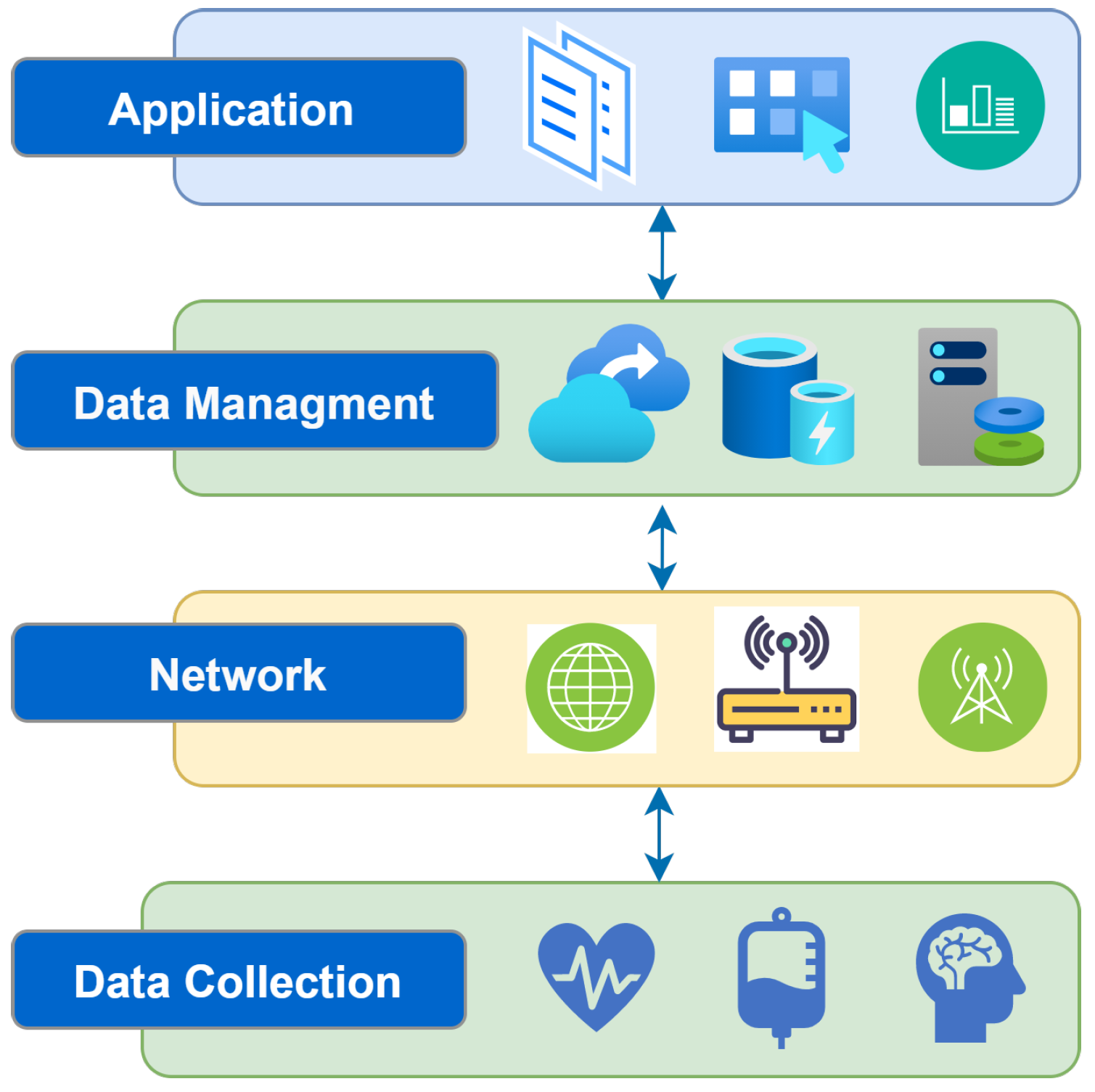
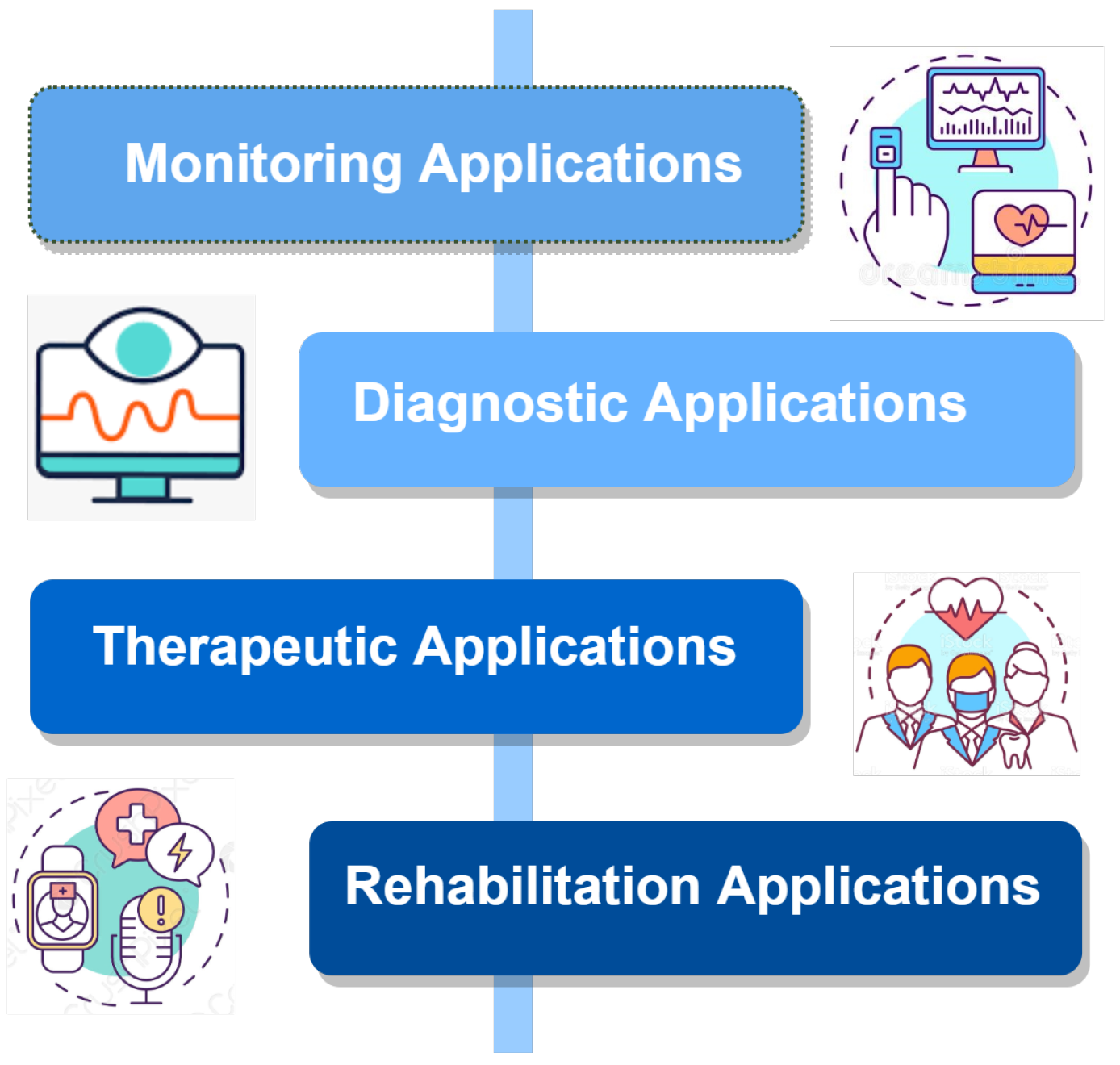
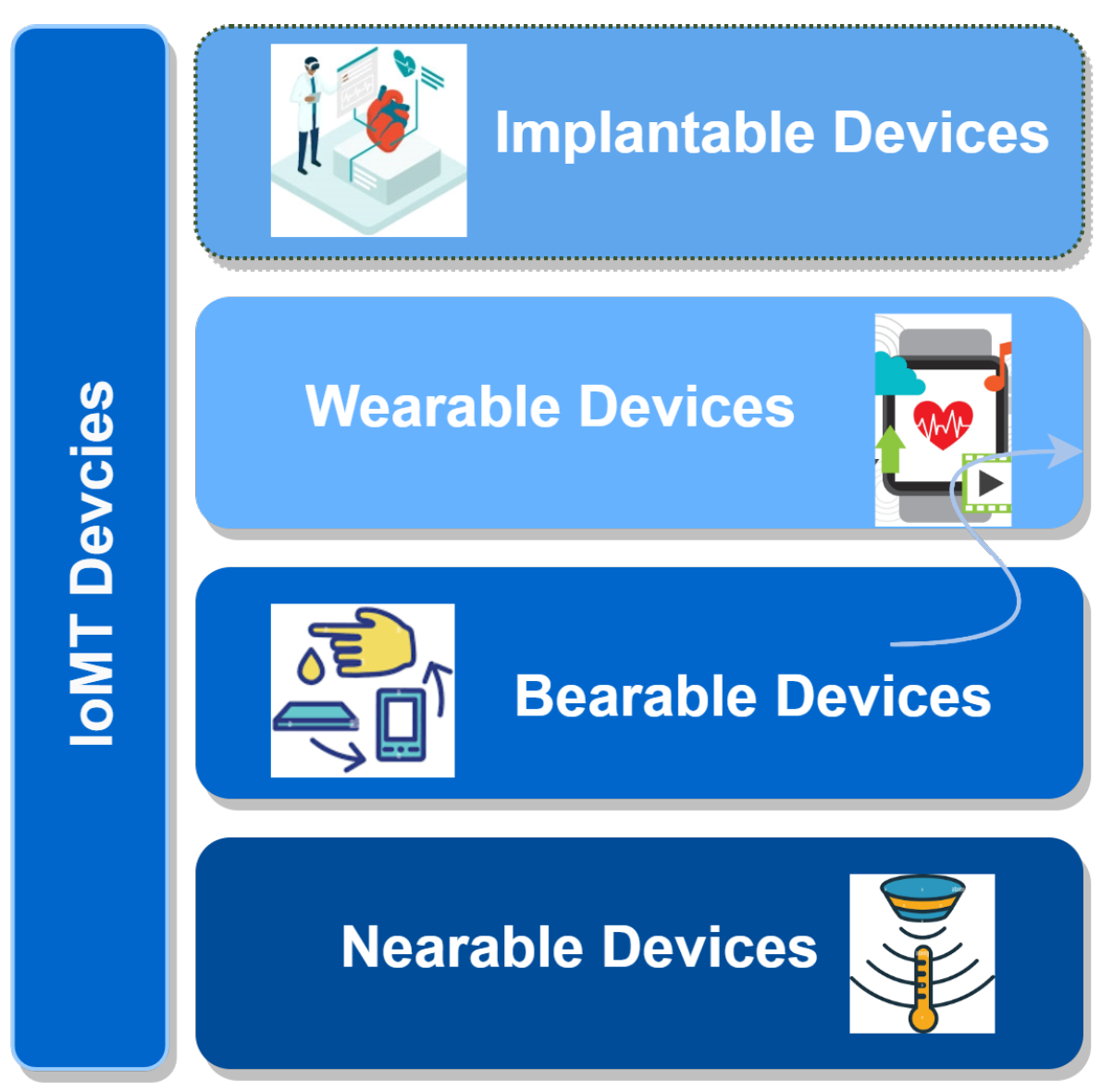
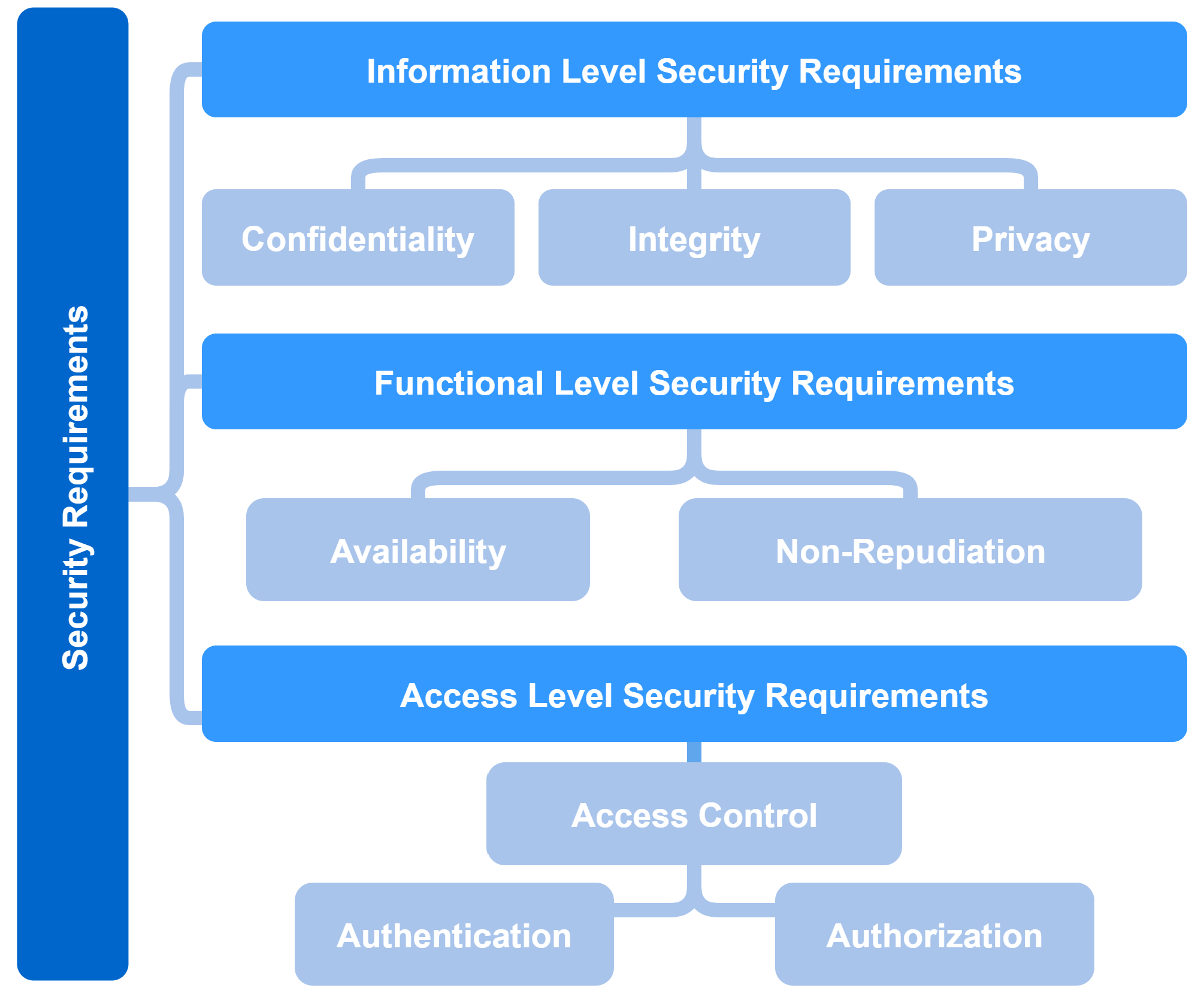

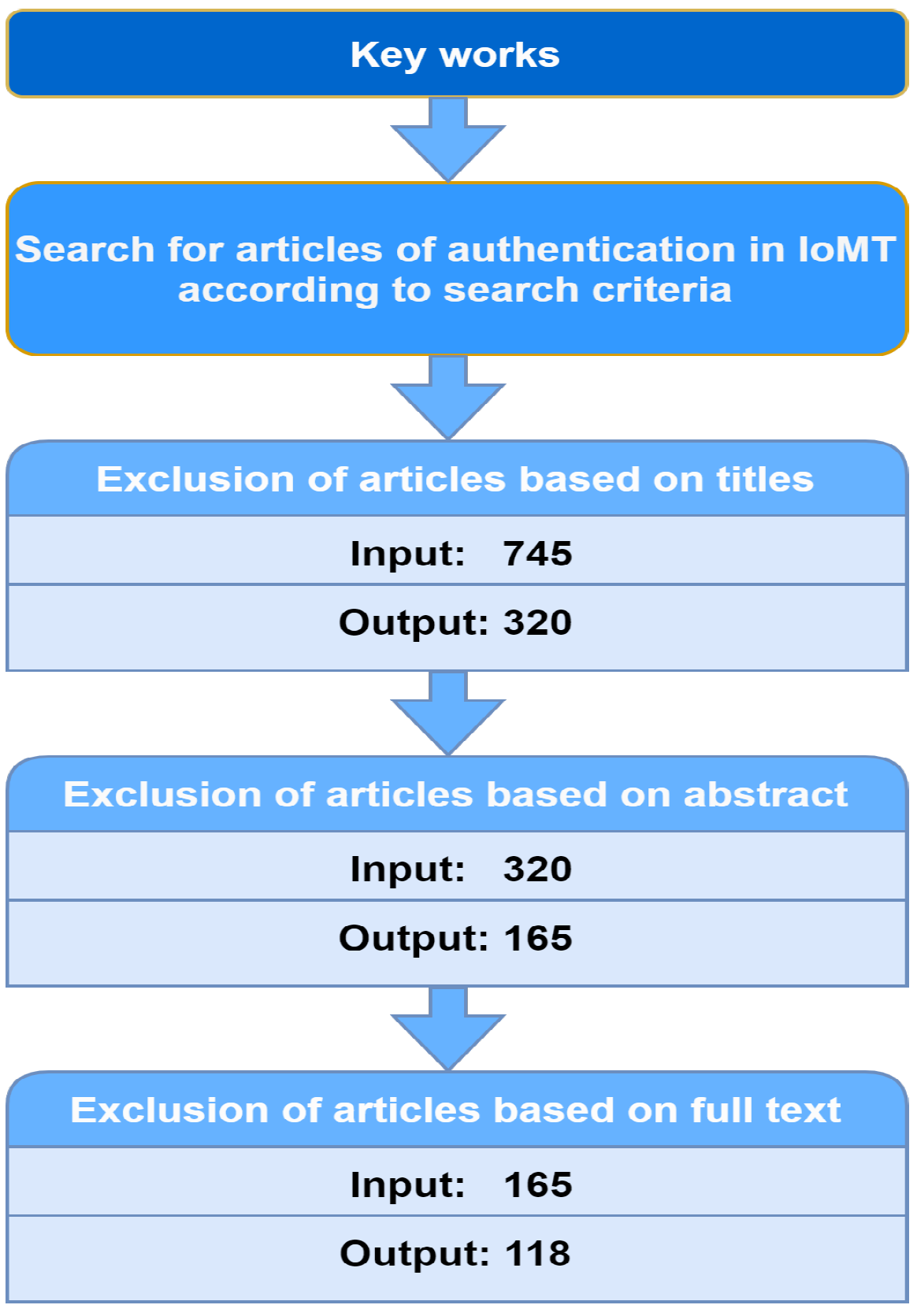



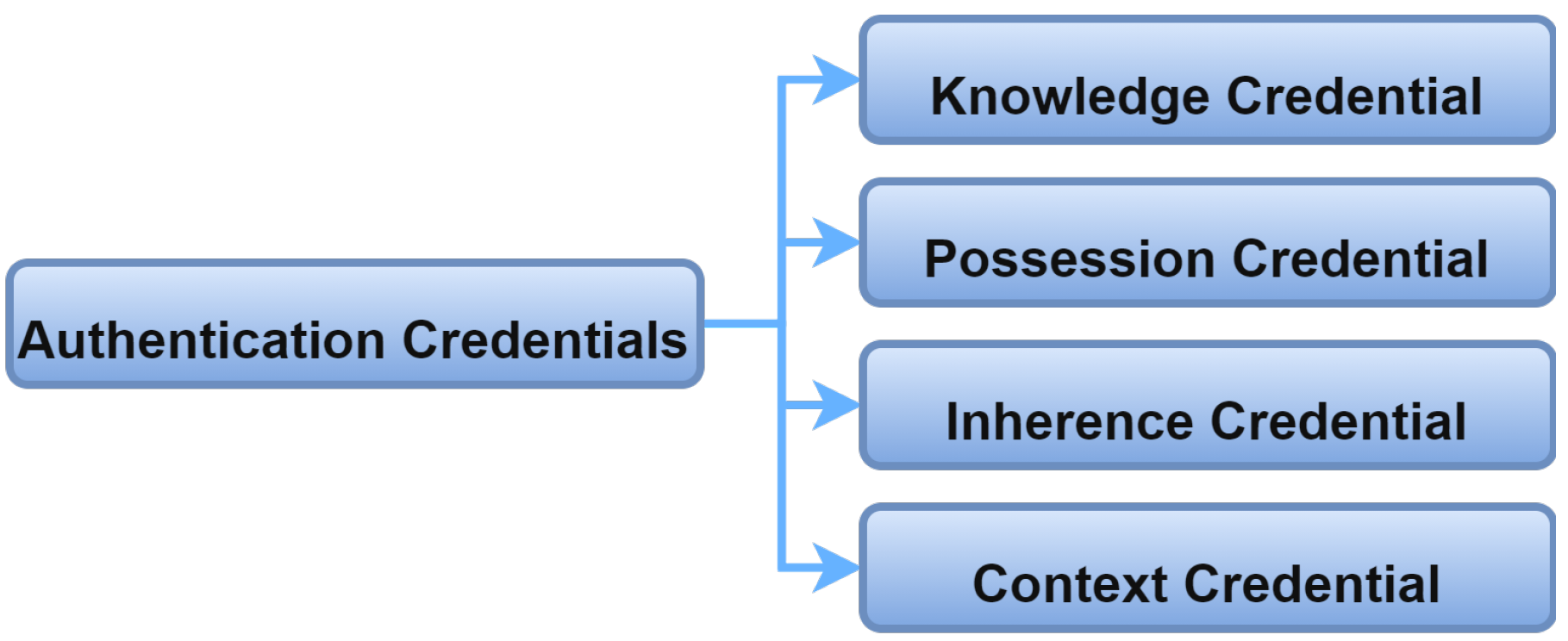


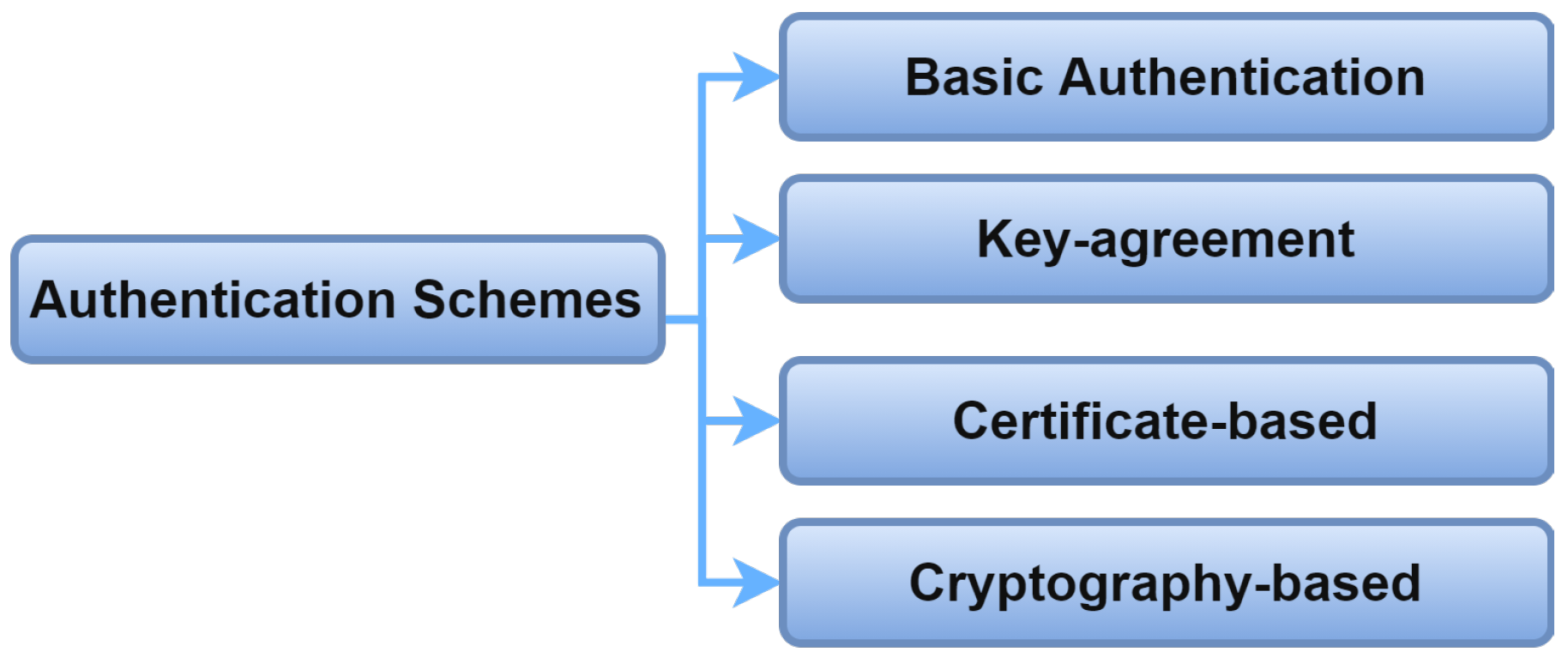

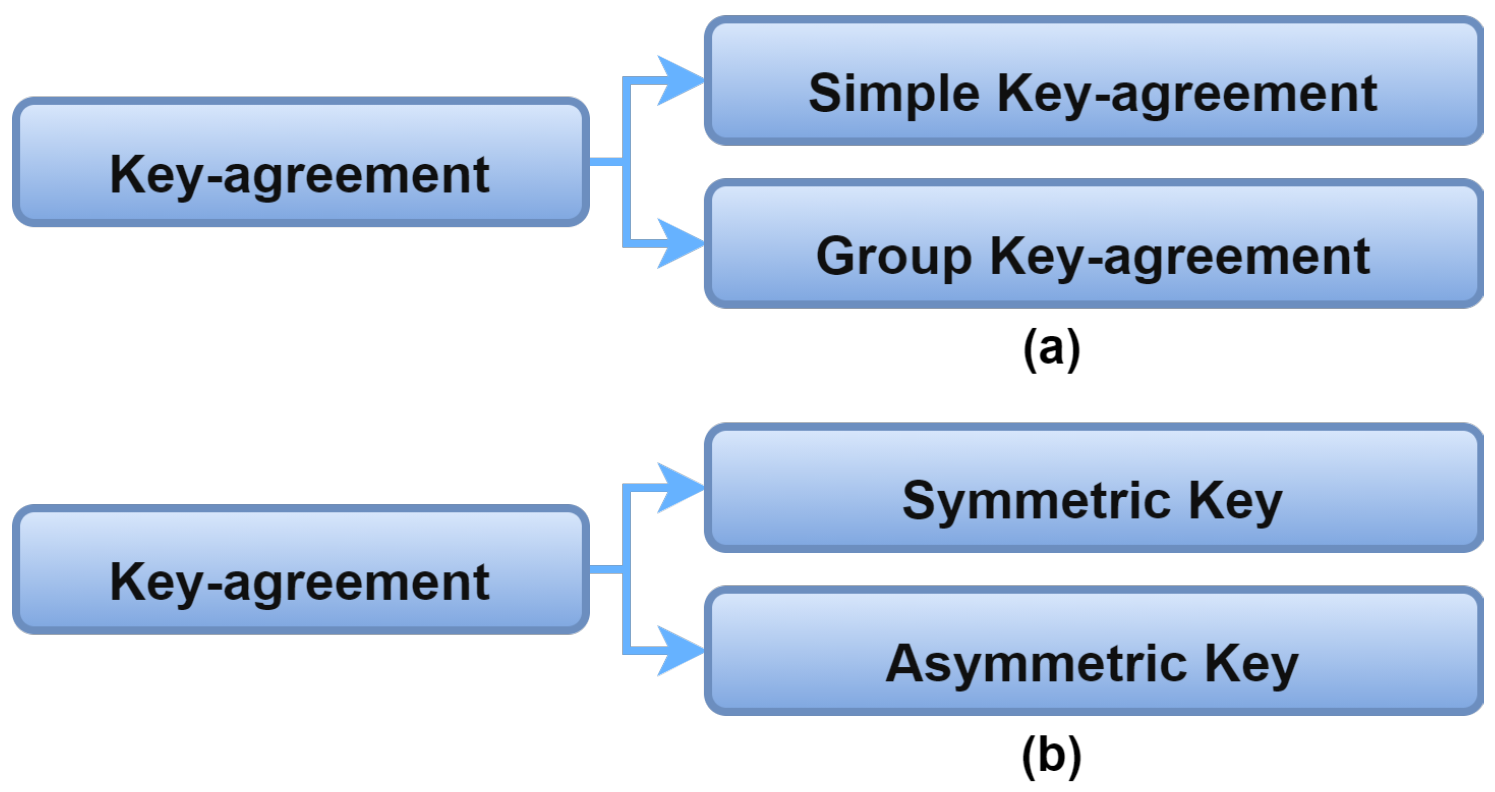
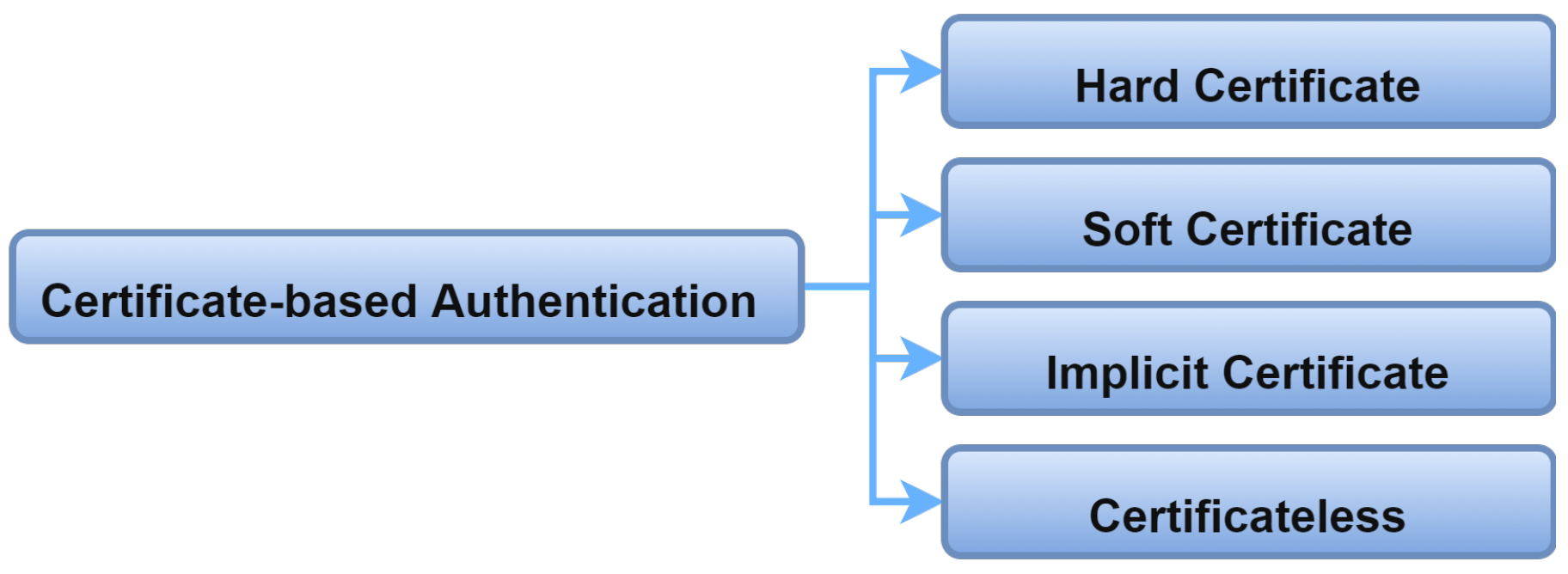
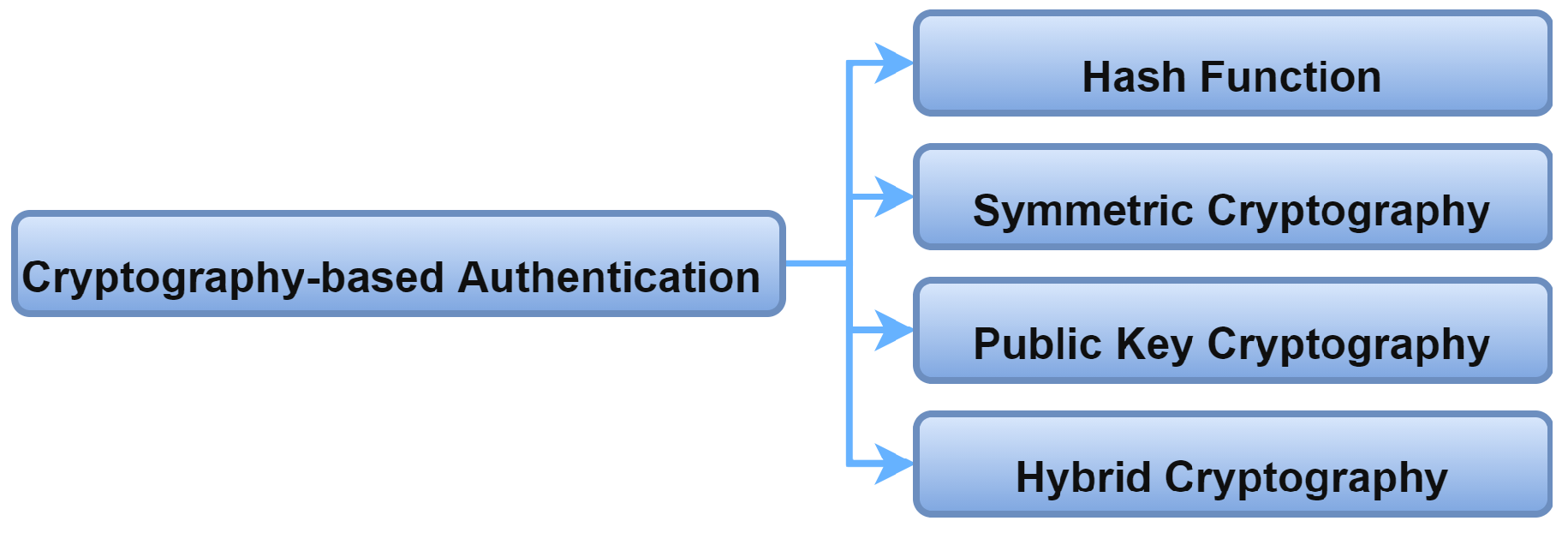
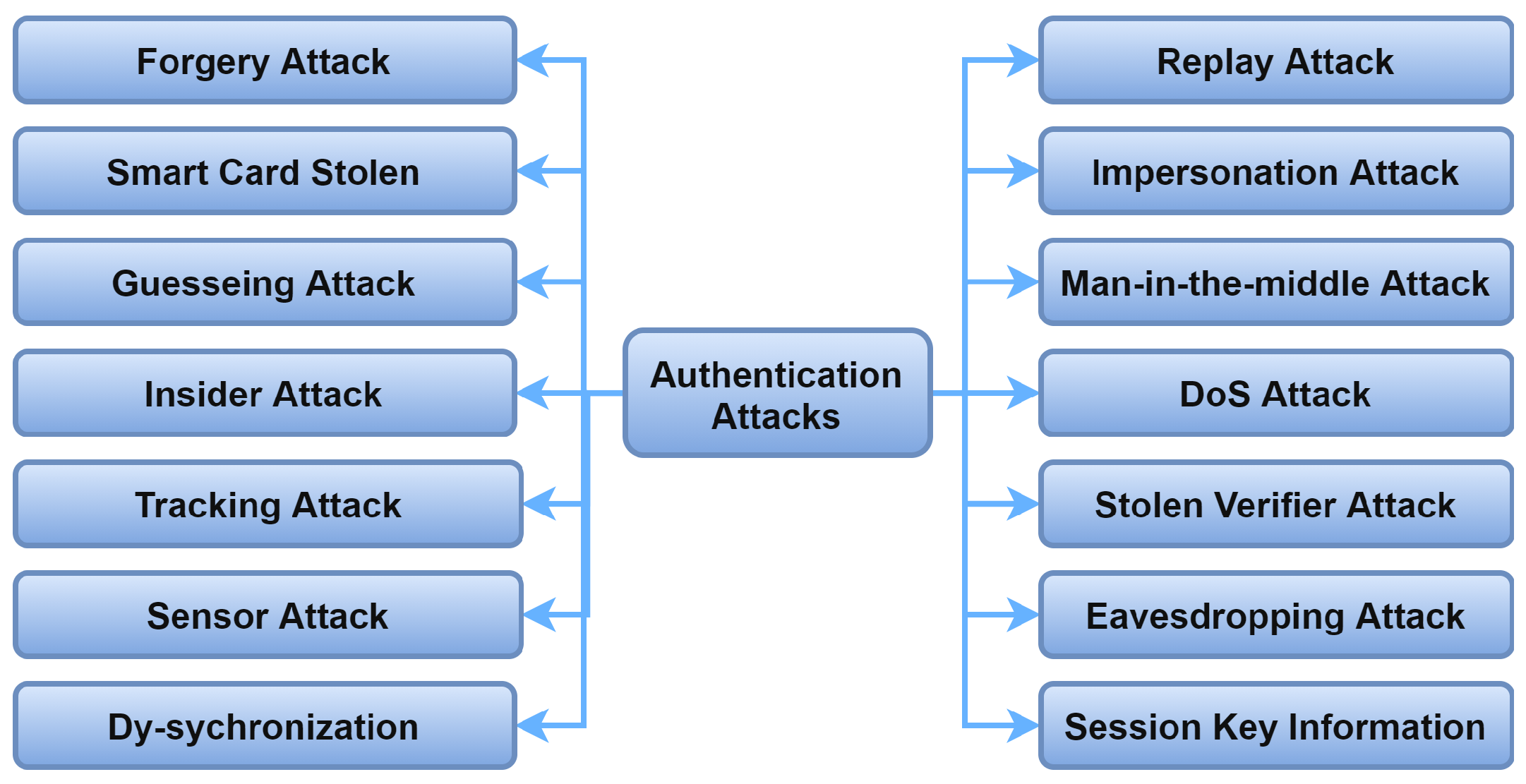

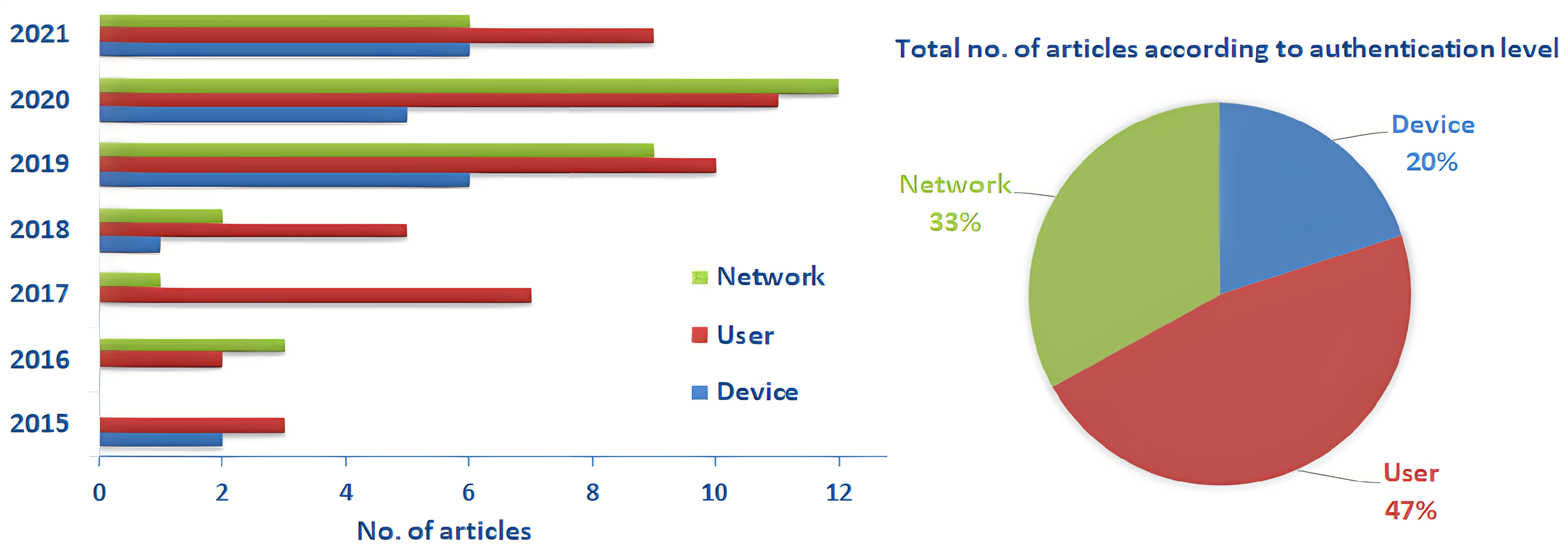

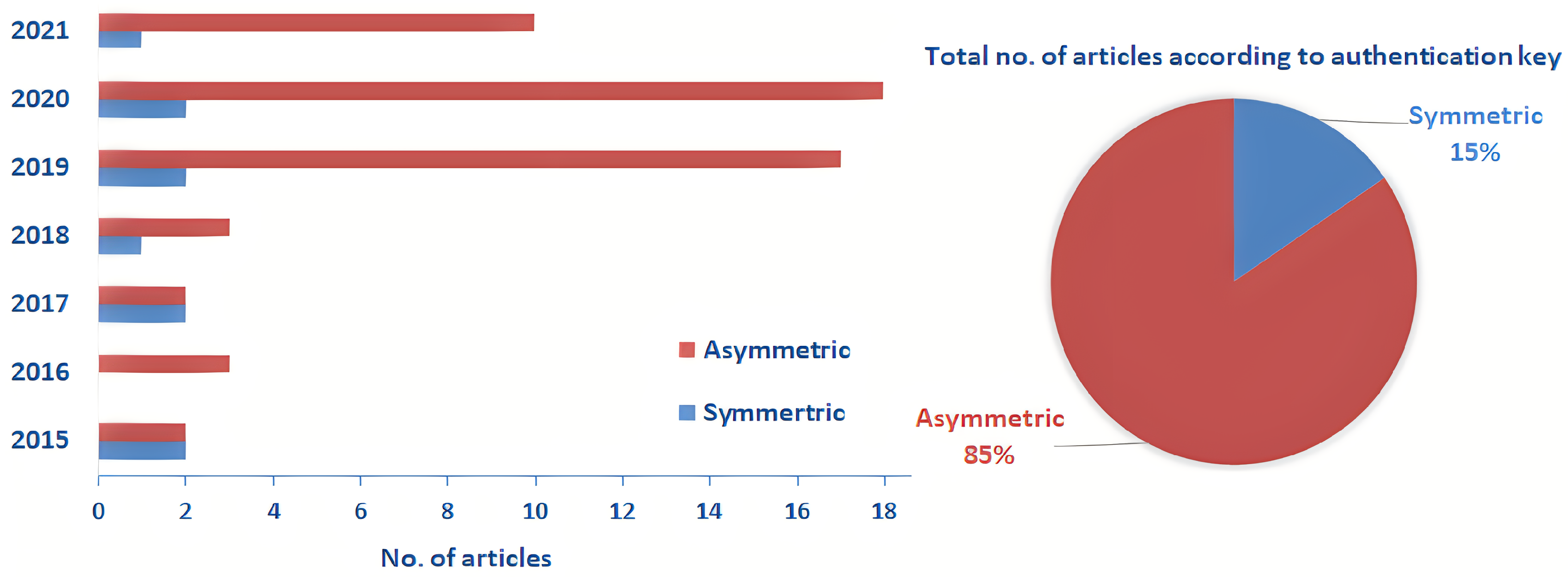
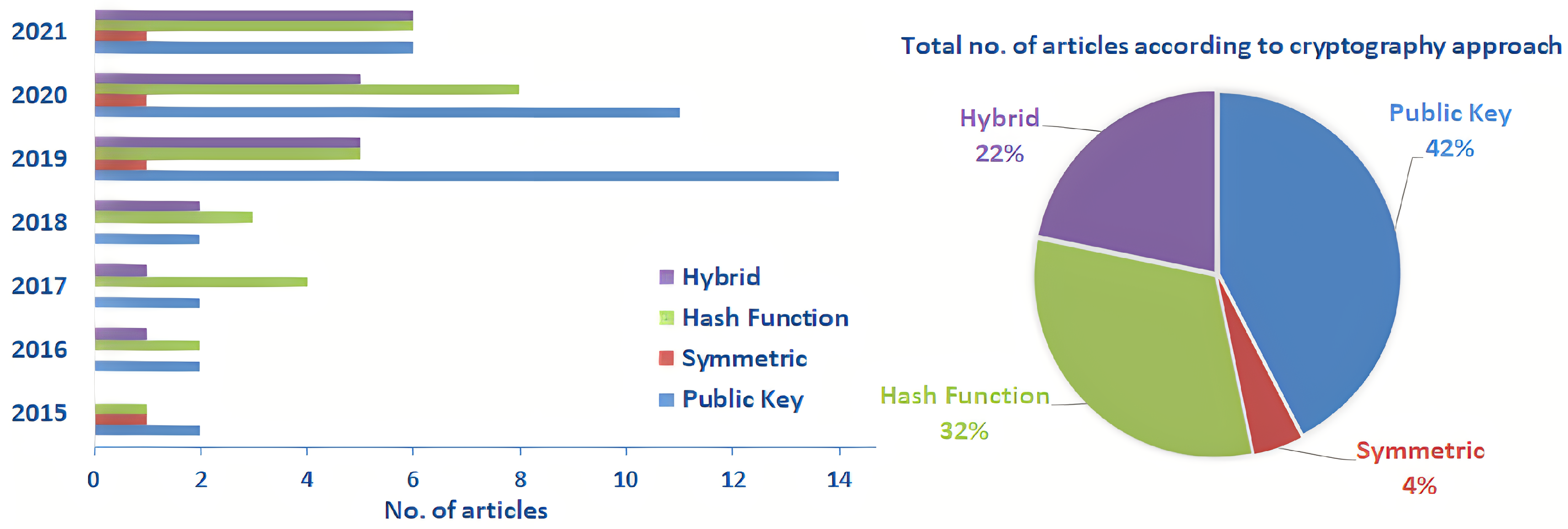
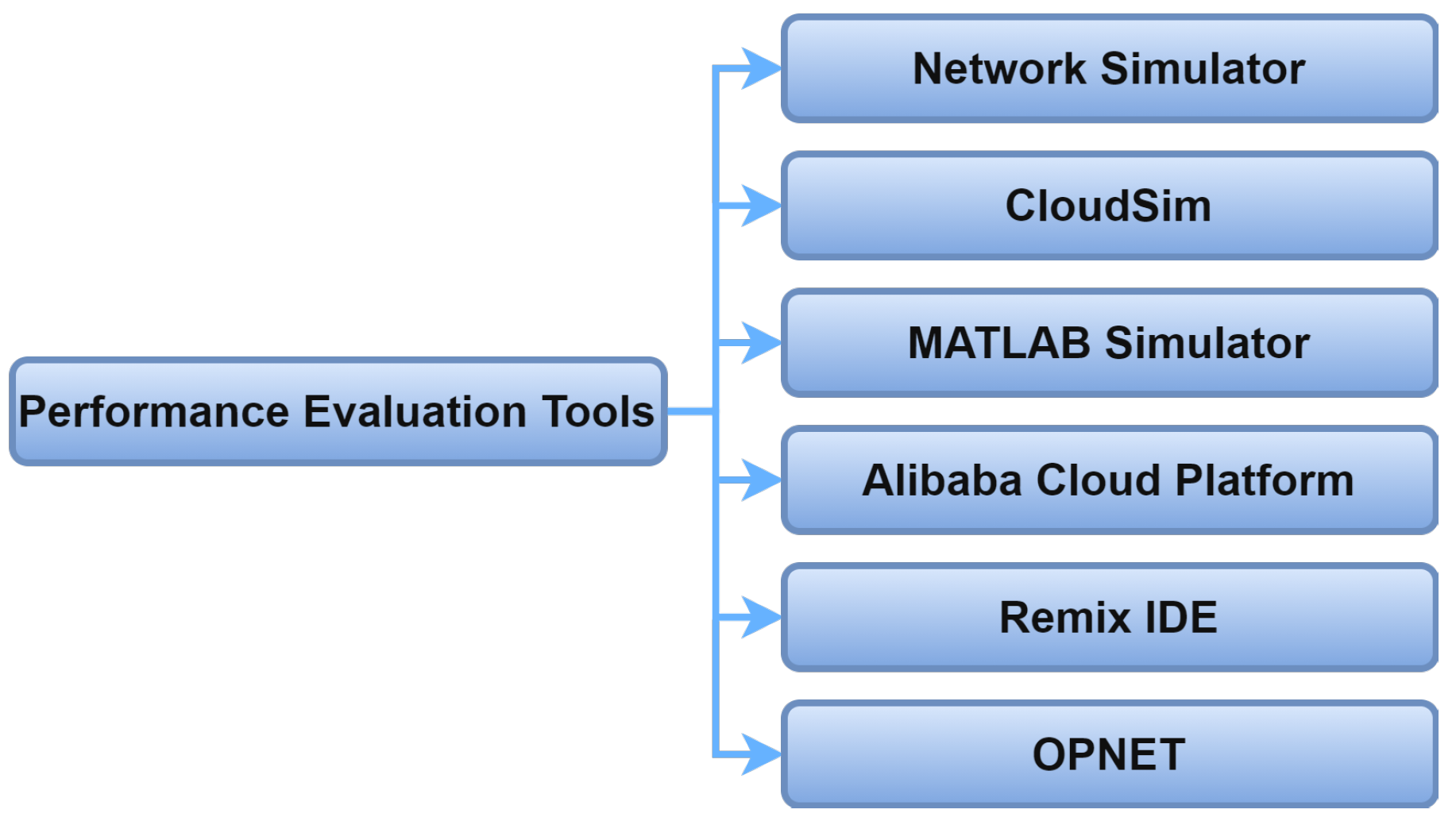
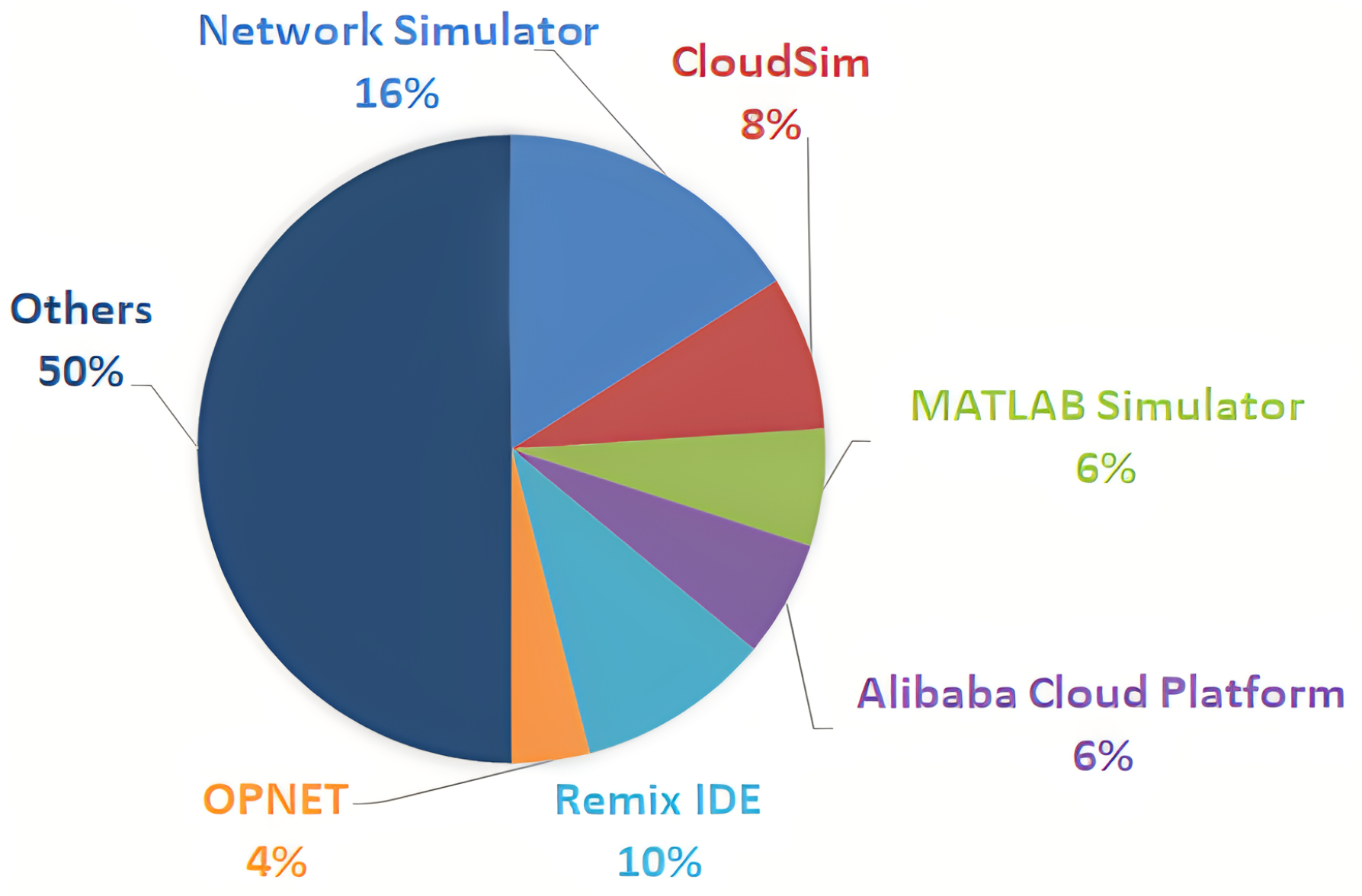

| Q# | Research Questions |
|---|---|
| Q1 | What are the levels of authentication in IoMT systems? |
| Q2 | What are the architectures of authentication in IoMT systems? |
| Q3 | What are the different types of credentials facilitated in IoMT authentication? |
| Q4 | What are the authentication procedures in IoMT systems? |
| Q5 | What are the authentication categories in IoMT systems? |
| Q6 | What are the different schemes of authentication in IoMT? |
| Q7 | What are the different attacks considered while proposing authentication schemes in IoMT systems? |
| Q8 | What are the different techniques and tools for evaluating authentication schemes in IoMT systems? |
| Q9 | What are the parameters used to evaluate the proposed authentication schemes in IoMT systems? |
| Criteria | Inclusion | Exclusion |
|---|---|---|
| Context | Articles consider IoT in the healthcare context. | Articles consider IoT in a different or general context. |
| Issue | Articles consider authentication as the main issue. | Articles consider other security requirements. |
| Purpose | Articles propose authentication schemes or improve previous ones. | Articles review authentication schemes or implement previous ones. |
| Ref. | Year | Scheme | Computation | Communication | Storage |
|---|---|---|---|---|---|
| Z. Mahmood et al. [95] | 2017 | ECC | 0.0087 ms | 480 bits | 480 bits |
| X. Li et al. [121] | 2018 | ECC | 0.00602 ms | 480 bits | 1456 bits |
| R. Ali and A Pal [77] | 2018 | Hash function | 1.0610 s | 1504 bits | 3008 bits |
| K. Sowjanya et al. [127] | 2019 | ECC | 92.035 ms | 3456 bits | 1408 bits |
| Z. Xu [66] | 2019 | Hash function | 0.0624 ms | 3904 bits | 1280 bits |
| X. Yang et al. [113] | 2019 | ECDH | 3.17 ms | 1280 bits | 1472 bits |
| T. Wu et al. [96] | 2021 | Hash function | 196.02 ms | 7744 bits | 640 bits |
| K. Sowjanya et al. [128] | 2021 | ECC | 6.6968 ms | 4640 bits | 1568 bits |
| T. Le et al. [106] | 2021 | AES, Biohash | 0.00744 ms | 1280 bits | 1824 bits |
| J. Li et al. [92] | 2021 | Hash function | 5.312 ms | 98 bytes | 289 bytes |
| T. Liu et al. [87] | 2021 | Hash function, fuzzy extractor | 0.6663 ms | 1280 bits | 640 bits |
| S. Nashwan [129] | 2021 | Hash function | 0.51712 s | 13984 bits | 256 bits |
| Ref. | Source | Year | Purpose | Level | Procedure | Performance Evaluation | Evaluation Parameters | Cryptography Approach | Key-Based | Security Validation |
|---|---|---|---|---|---|---|---|---|---|---|
| [46] | Springer link | 2016 | RFID-based authentication for healthcare in mobile vehicular applications | Network | Two-way | NS-2 simulator | Computation overhead, complexity, and service delivery. | ECC | Asymmetric | Informal |
| [68] | Science Direct | 2017 | A lightweight, and robust two-factor authentication for personalized healthcare systems in wireless-sensor networks | Network | Two-way | NS-3 | Delivery ratio, throughput, delay, communication cost, practicality | Dynamic Pseudo-identity | Symmetric | Informal, Proverif tool |
| [95] | Google scholar | 2017 | Authentication framework for pervasive healthcare services | User | Three-way | NS-2 simulator | Communication computation, storage overhead | ECC | Asymmetric | Informal |
| [121] | Springer link | 2018 | Efficient, anonymous, and secure authentication in mobile three-tier healthcare with wearable medical devices | Network | Three-way | SPAN animator software | Communication computation, storage overhead | ECC | Asymmetric | Informal, BAN logic, AVISPA |
| [93] | Springer link | 2019 | Authenticated key agreement for healthcare systems in fog-based IoT network | Network | Three-way | Alibaba Cloud platform | Computation and communication costs | Bilinear pairings | Asymmetric | Informal and formal proof |
| [69] | Science Direct | 2019 | Robust and secure authentication protocol with the implementation of Field-Programmable Gate Array in healthcare applications | Network | Two-way | Altera Quartus II simulation | Computation and communication overhead | ECC | Asymmetric | Informal. BAN logic |
| [24] | Science Direct | 2019 | Anonymous and context-aware authentication protocol for IoT-healthcare systems | Device | One-way | NS2 2.35 simulator | Computation and communication overhead, energy consumption | Unlikable shadow-IDs | Symmetric | Informal, BAN logic, ROR, Scyther tool |
| [75] | IEEE | 2019 | Authentic-enabled privacy scheme for smart-healthcare applications using IoT | User | Two-way | NS-3 simulator | end-to-end delay, throughput rate, routing, and delivery ratio overhead | ECC | Asymmetric | Informal, ROM, BAN logic |
| [42] | Science Direct | 2020 | Two-factor authentication for healthcare services in wireless medical-sensor networks | Network | Two-way | OPNET | Computation and communication overhead | Hash function | N/A | ROR, Proverif |
| [124] | Springer link | 2020 | Chaotic-map authentication scheme with preservation of privacy for IoMT | Network | Three-way | NS-3 simulator | Transmission delay, throughput, computation cost, and time | Chaotic-map | Asymmetric | ROM, informal |
| [81] | Science Direct | 2020 | Session key-based and privacy authentication for IoMT-based networks | Network | Three-way | NS-3 simulator | Throughput, delay | Hash function | N/A | Informal, AVISPA, BAN logic |
| [41] | Google scholar | 2020 | Improved authentication for IoT-enabled smart-healthcare applications | Network | Three-way | Netbeans IDE 6.8 | Communication and computation costs | ECC | Asymmetric | Informal, AVISPA tool |
| [31] | IEEE | 2020 | Secure, lightweight, and provably authentic-based key agreement without the need for a table of verification for IoMT | User, Device | Three-way | NS-2 simulator | Communication and computation overhead | Hash function | N/A | AVISPA, BAN logic, ROR |
| [112] | IEEE | 2020 | Blockchain-enabled model for sustainable and trust IoT-healthcare IoT application | Device | Two-way | Prototype using ripple chain | Scalability, authentication, availability, interoperability, confidentiality, integrity, privacy | ECC | Asymmetric | N/A |
| [126] | IEEE | 2020 | Effective blockchain-enabled access control for privacy assurance in IoMT | Device | Two-way | Remix IDE | Communication and computation, overhead | ECC | Asymmetric | Scyther tool |
| [43] | Springer link | 2021 | Design of blockchain-enabled security framework for IoMT with interplanetary file-system | Network | Two-way | node.js, solidity and remix IDE | Computation time and cost | ECDSA | Asymmetric | Informal |
| [73] | IEEE | 2021 | Two-way authentication for IoMT in cloud-based healthcare | Network | Two-way | FPGA and Moteiv TMote Sky-Mote | Communication and computation overheads | Hash function | N/A | Informal, BAN logic |
Publisher’s Note: MDPI stays neutral with regard to jurisdictional claims in published maps and institutional affiliations. |
© 2022 by the authors. Licensee MDPI, Basel, Switzerland. This article is an open access article distributed under the terms and conditions of the Creative Commons Attribution (CC BY) license (https://creativecommons.org/licenses/by/4.0/).
Share and Cite
Alsaeed, N.; Nadeem, F. Authentication in the Internet of Medical Things: Taxonomy, Review, and Open Issues. Appl. Sci. 2022, 12, 7487. https://doi.org/10.3390/app12157487
Alsaeed N, Nadeem F. Authentication in the Internet of Medical Things: Taxonomy, Review, and Open Issues. Applied Sciences. 2022; 12(15):7487. https://doi.org/10.3390/app12157487
Chicago/Turabian StyleAlsaeed, Norah, and Farrukh Nadeem. 2022. "Authentication in the Internet of Medical Things: Taxonomy, Review, and Open Issues" Applied Sciences 12, no. 15: 7487. https://doi.org/10.3390/app12157487
APA StyleAlsaeed, N., & Nadeem, F. (2022). Authentication in the Internet of Medical Things: Taxonomy, Review, and Open Issues. Applied Sciences, 12(15), 7487. https://doi.org/10.3390/app12157487







